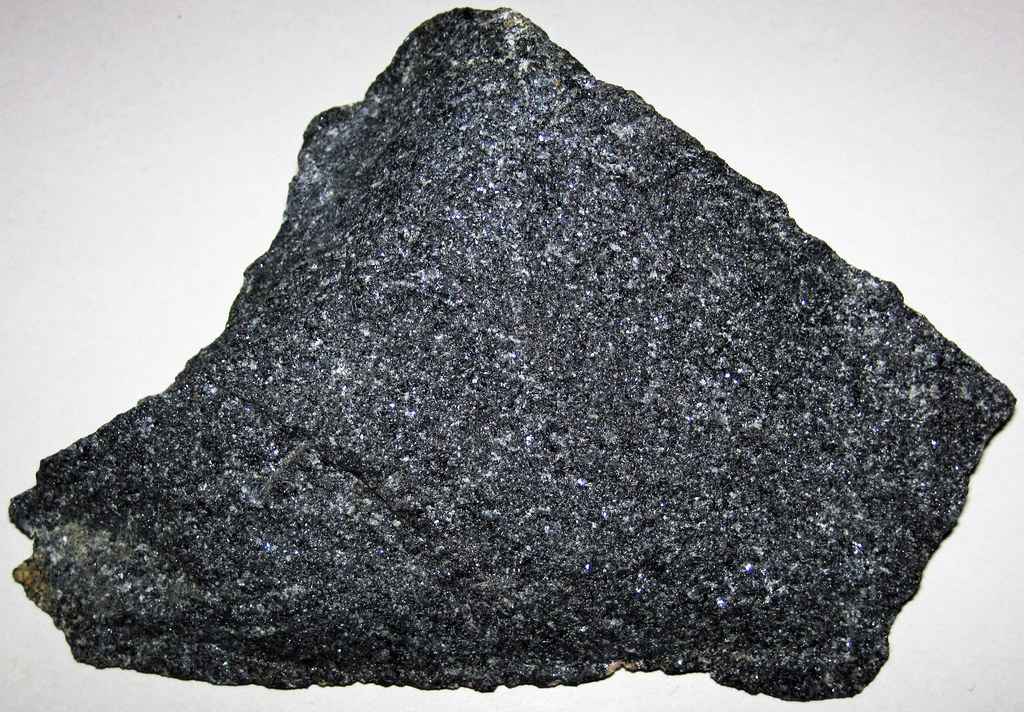Geo Lab Midterm Identification
1/33
There's no tags or description
Looks like no tags are added yet.
Name | Mastery | Learn | Test | Matching | Spaced |
|---|
No study sessions yet.
34 Terms
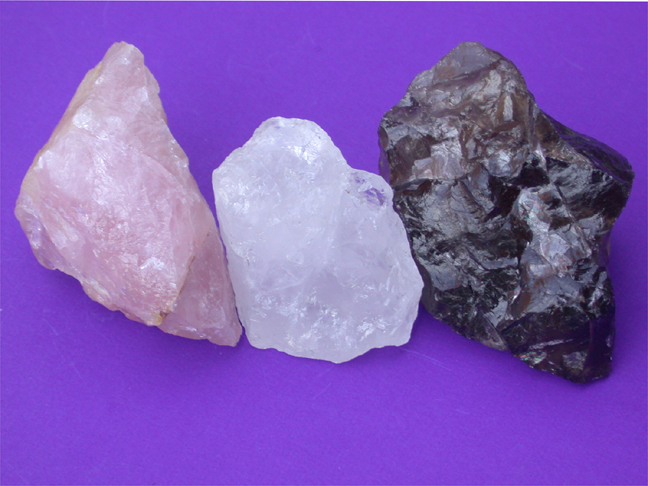
Identify
Mineral: Quartz
It breaks into curved shards rather than flat-faced cleavage fragments, meaning it exhibits conchoidal fracture. Almost always clear or white. Almost always present in light-colored rocks and in sandstones. If found in crystals, quartz always has a hexagonal cross-section like that of a common pencil.
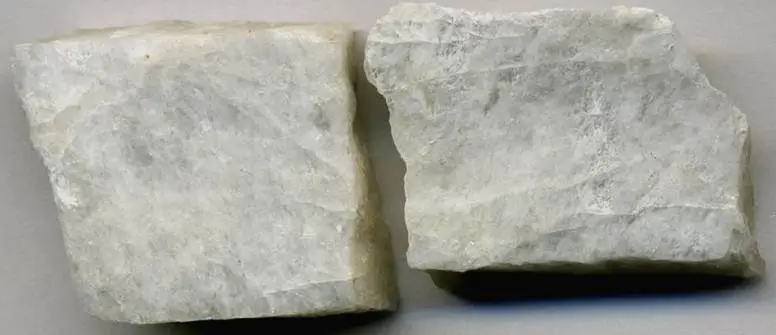
Identify
Mineral: Plagioclase-feldspar
Plagioclase feldspar is identified by its non-metallic, vitreous to pearly luster; white to dark gray color; and two good cleavages at nearly 90 degrees. Plagioclase feldspar has striations on some cleavage surfaces. Its hardness is 6.
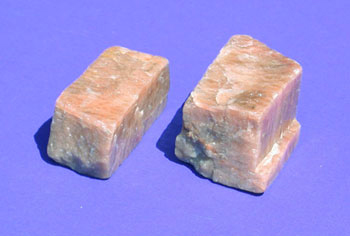
Identify
Mineral K-spar (Potassium Feldspar)
Both plagioclase and K-spar are commonly white. The salmon-pink color is typical of K-spar. Note the two cleavage surfaces and one fracture surface. There are no striations
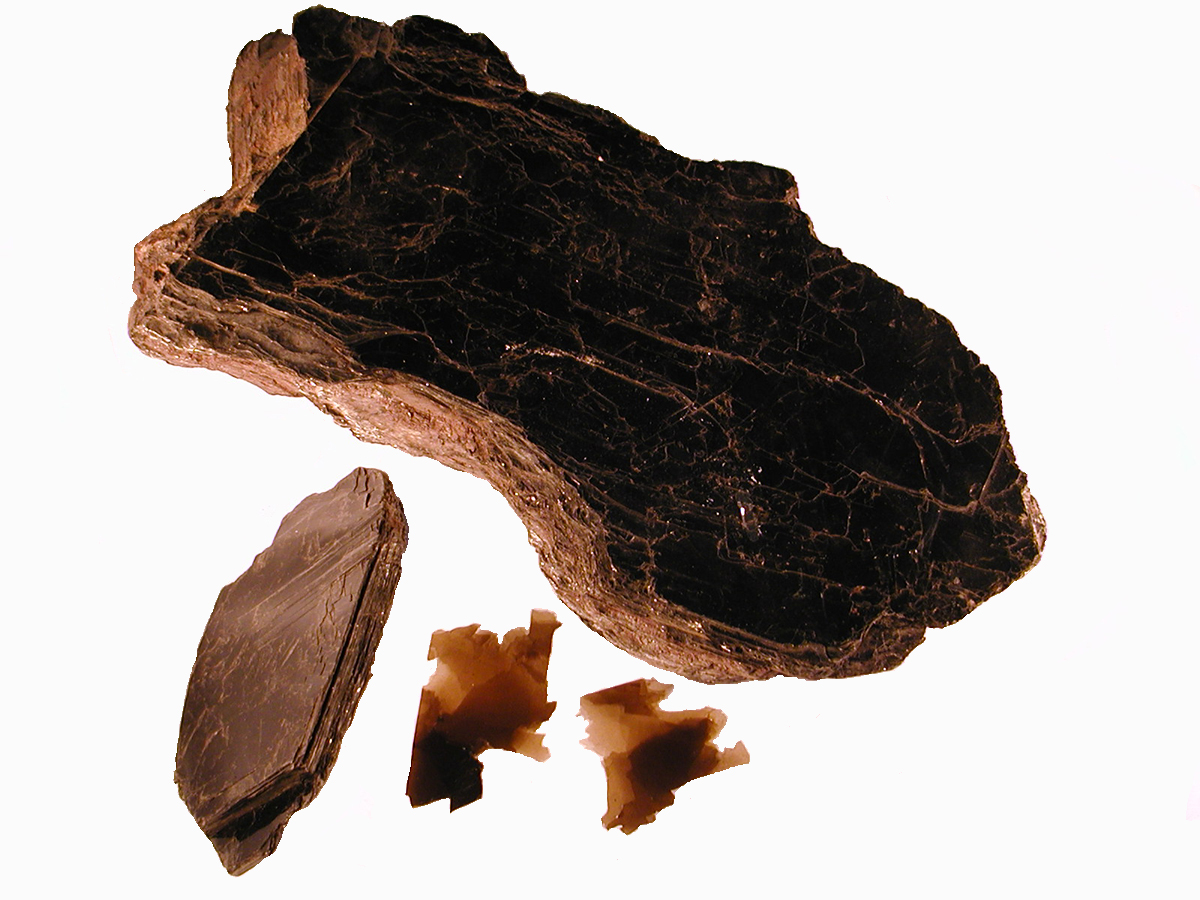
Identify
Mineral: Biotite
It is a black mica with perfect cleavage and a vitreous luster on the cleavage faces. When biotite is separated into thin sheets, the sheets are flexible but will break upon severe bending. When held up to the light, the sheets are transparent to translucent with a brown, gray, or greenish color.
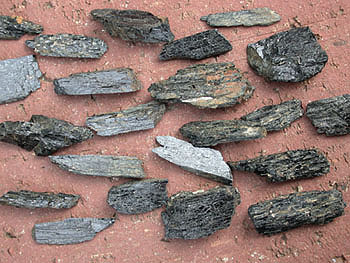
Identify
Mineral: Horneblende
Hornblende minerals as a group are relatively easy to identify. The diagnostic properties are their dark color (usually black) and two directions of excellent cleavage that intersect at 124 and 56 degrees. The angle between the cleavage planes and hornblende's elongate habit can be used to distinguish it from augite and other pyroxene minerals that have a short blocky habit and cleavage angles intersecting at about 90 degrees. The presence of cleavage can be used to distinguish it from black tourmaline that often occurs in the same rock
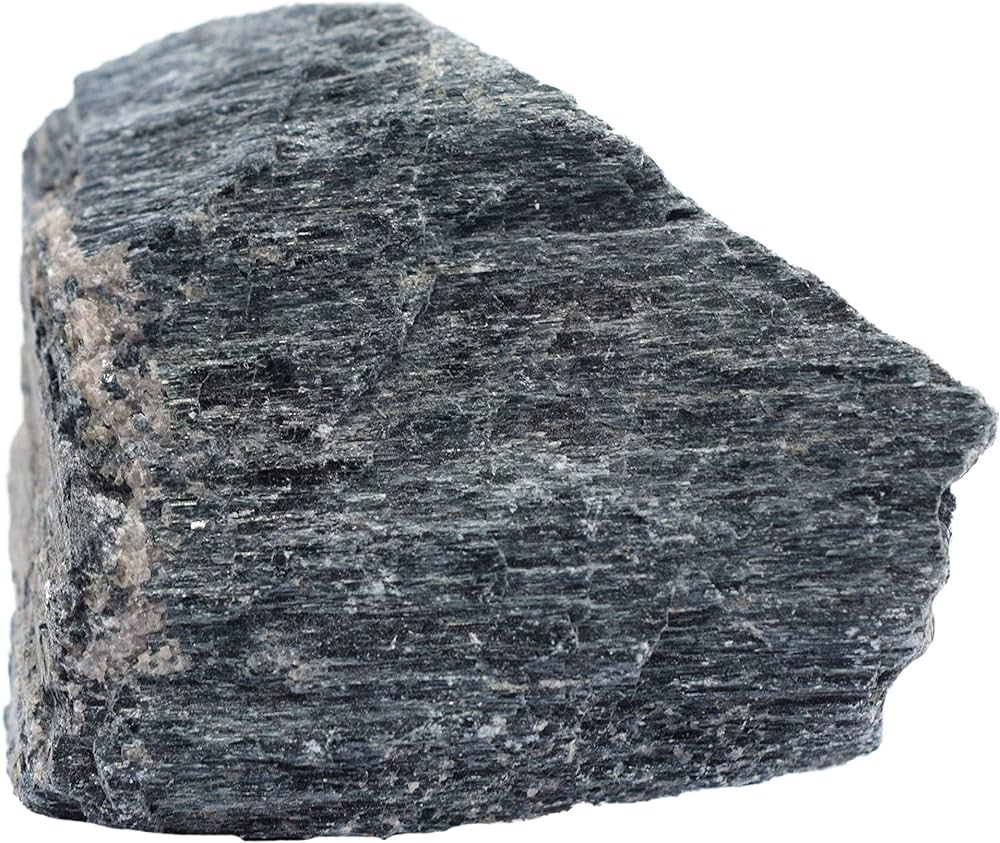
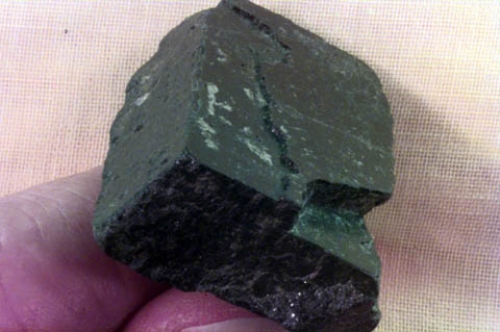
Identify
Mineral: Pyroxene
Identification: Pyroxenes typically occur as stubby prismatic crystals. They are generally dark green to black in color, though they can range from apple-green and lilac to colorless, depending on their chemical composition. Pyroxenes have a hardness between 5 and 7.
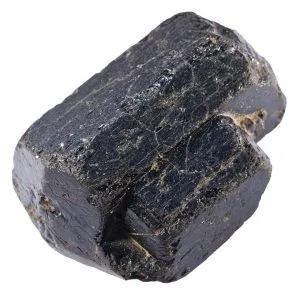
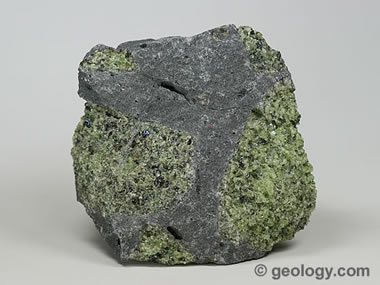
Identify
Mineral: Olivine
Olivine is usually green in color but can also be yellow-green, greenish yellow, or brown. It is transparent to translucent with a glassy luster and a hardness between 6.5 and 7.0. It is the only common igneous mineral with these properties. The properties of olivine are summarized in the table.
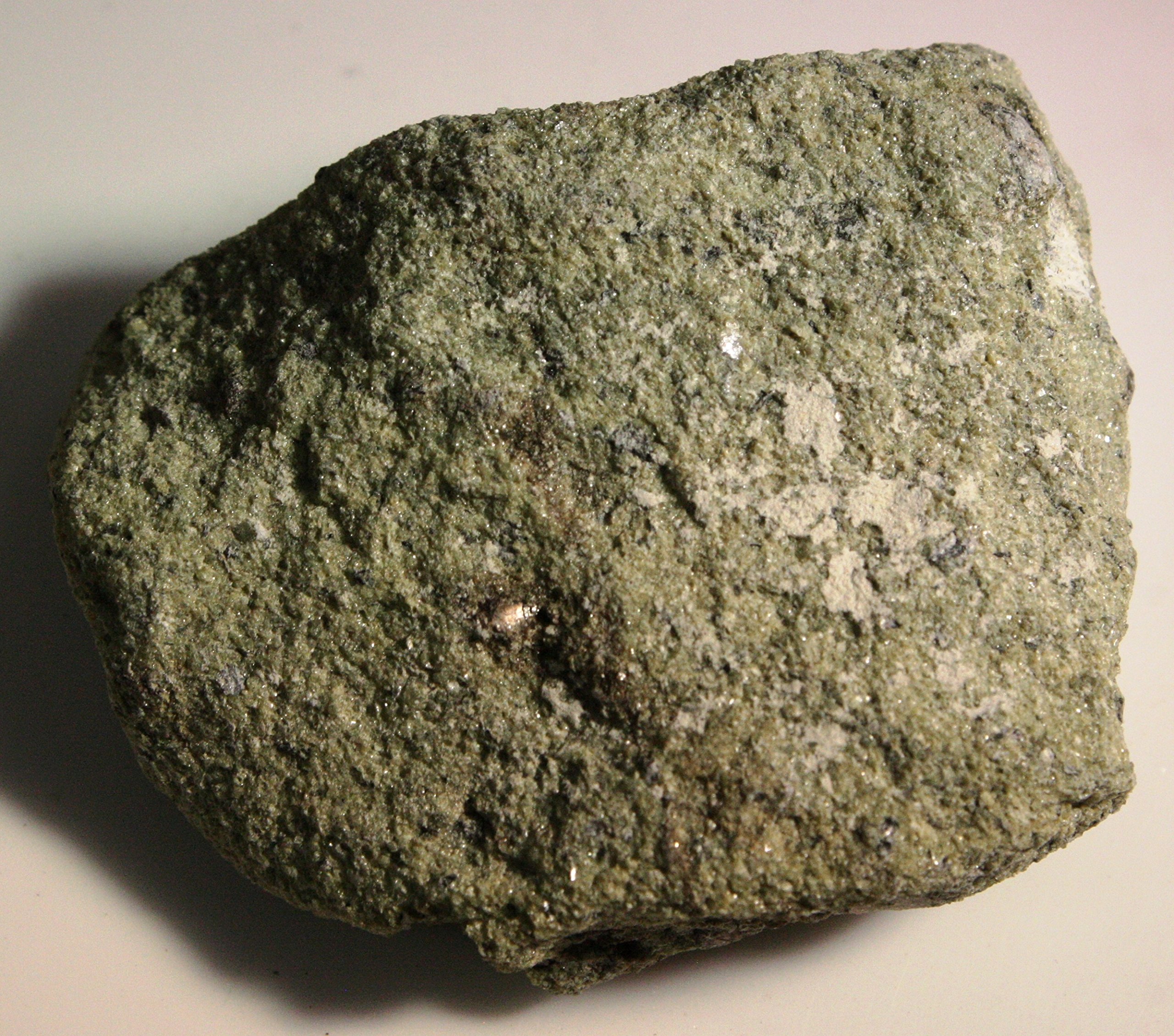
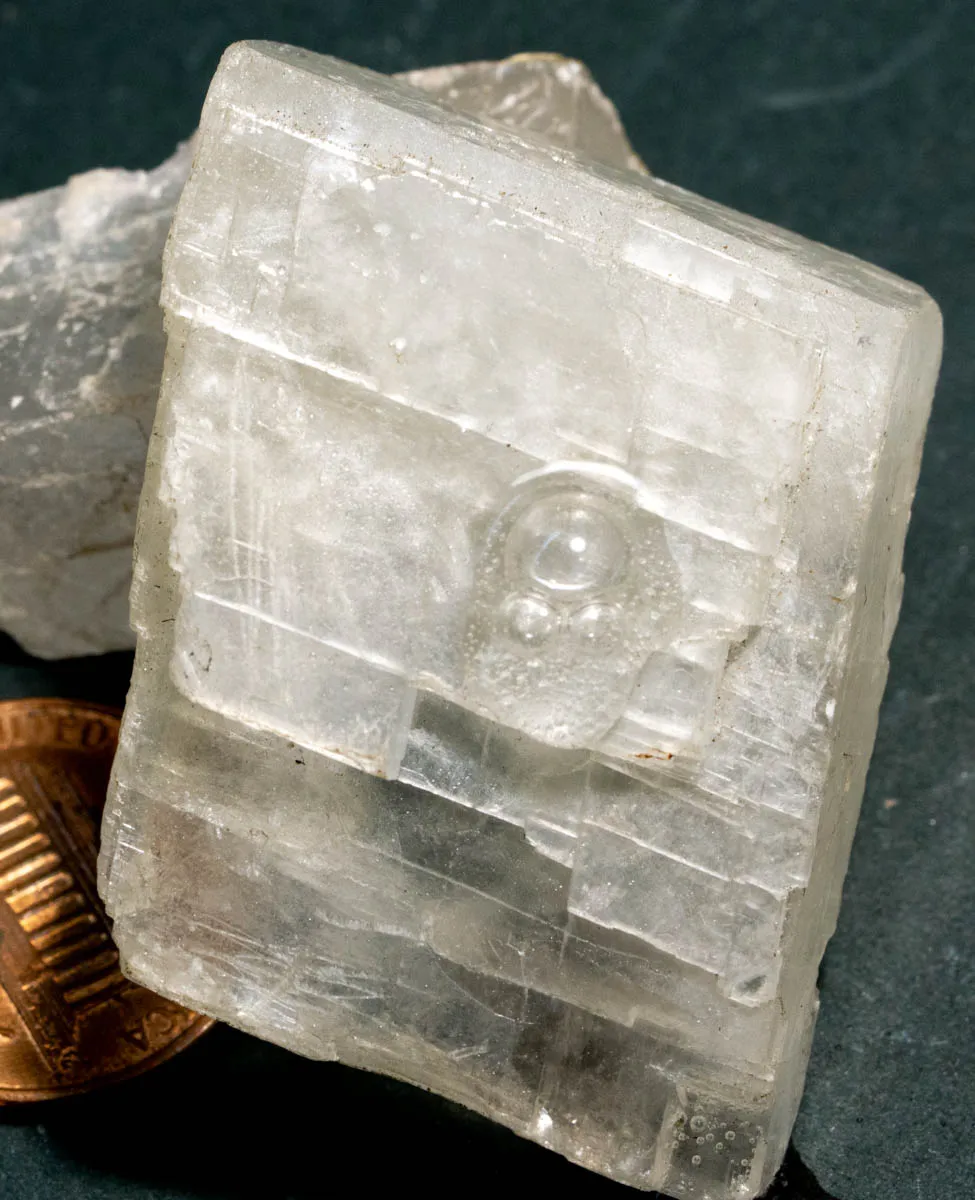
Identify
Mineral: Calcite
Distinguished by its softness (3), its perfect cleavage, light color, vitreous luster. Distinguished from dolomite by the fact that fragments of calcite effervesce freely in cold hydrochloric acid, whereas those of dolomite do not. Distinguished from aragonite by having lower specific gravity and rhombohedral cleavage.
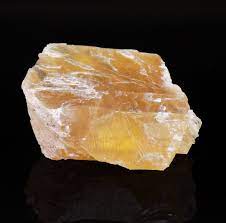
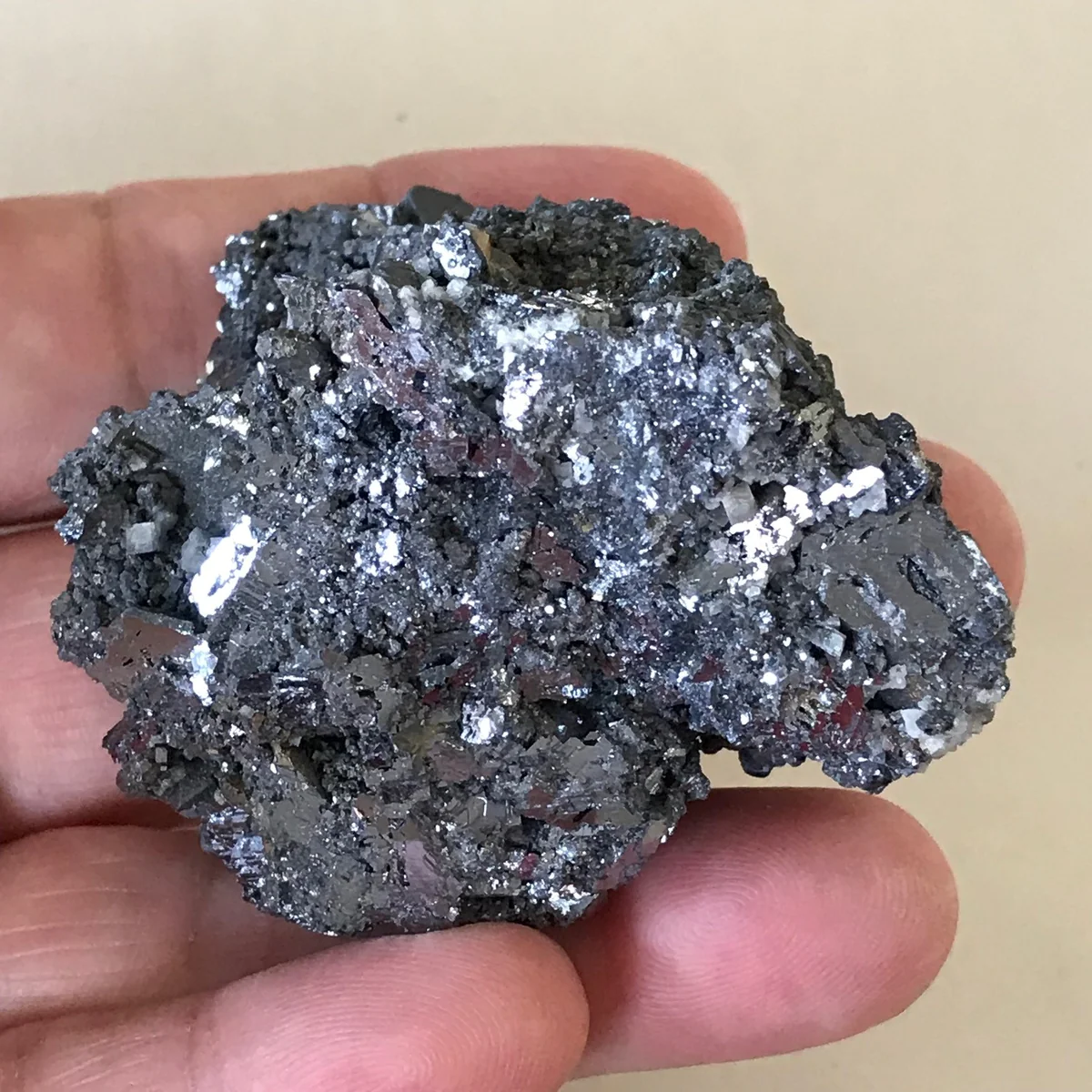
Identify
Mineral: Galena
Galena is very easy to identify. Freshly broken pieces exhibit perfect cleavage in three directions that intersect at 90 degrees. It has a distinct silver color and a bright metallic luster. Galena tarnishes to a dull gray. Because lead is a primary element in galena, the mineral has a high specific gravity (7.4 to 7.6) that is immediately noticed when picking up even small pieces. Galena is soft with a Mohs hardness of 2.5+ and produces a gray to black streak. Crystals are common and they usually are cubes, octahedrons, or modifications.
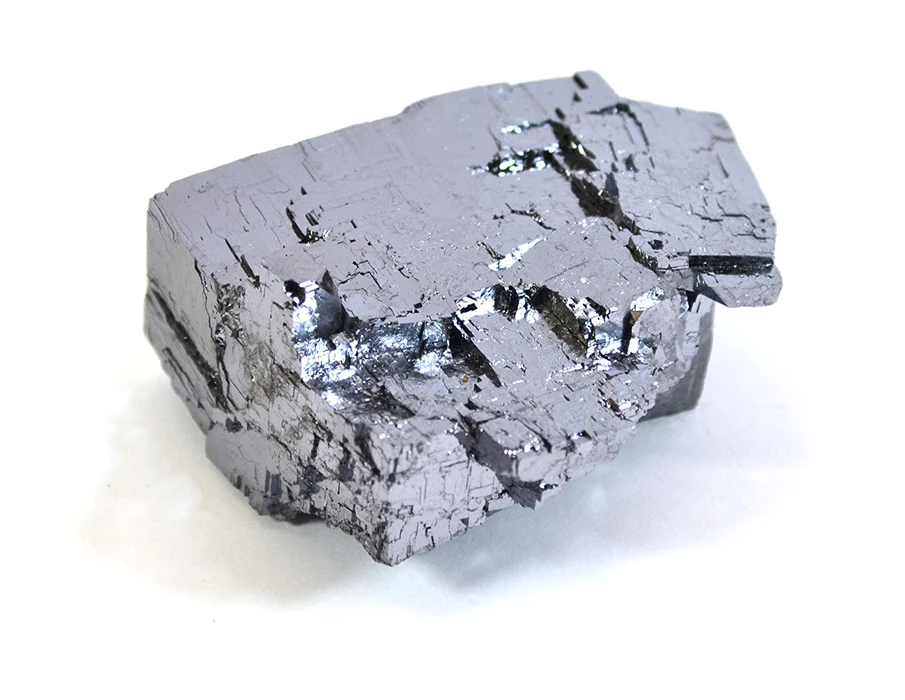
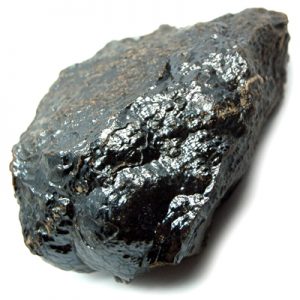
Identify
Mineral: Hematite
Hematite has an extremely variable appearance. Its luster can range from earthy to submetallic to metallic. Its color ranges include red to brown and black to gray to silver. It occurs in many forms that include micaceous, massive, crystalline, botryoidal, fibrous, oolitic, and others.
Even though hematite has a highly variable appearance, it always produces a reddish streak. Students in introductory geology courses are usually surprised to see a silver-colored mineral produce a reddish streak. They quickly learn that the reddish streak is the most important clue for identifying hematite.
Hematite is not magnetic and should not respond to a common magnet.
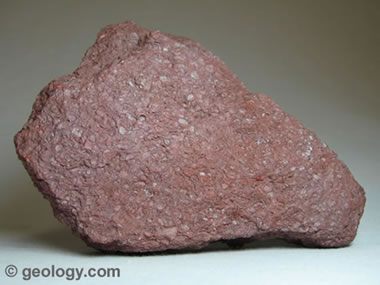
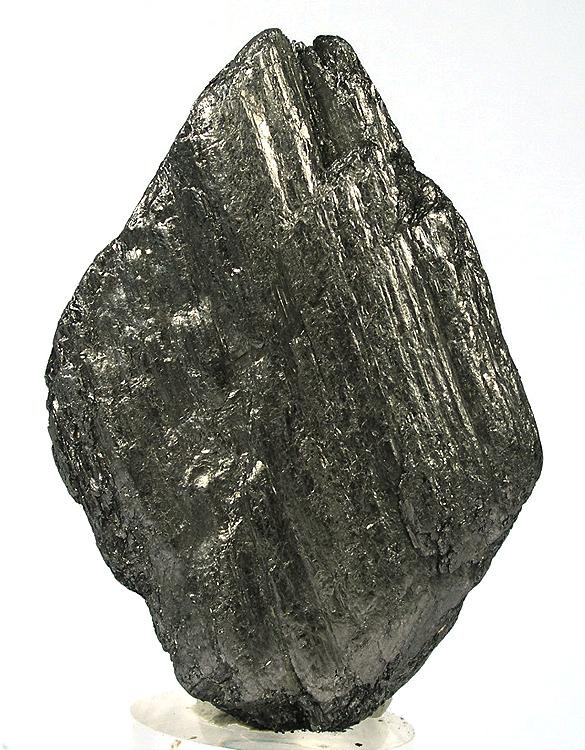
Identify
Mineral: Graphite
Graphite’s extreme softness, greasy feel, low specific gravity, and the ease with which it leaves dark gray to black marks on paper, usually serve to distinguish it from similar looking metallic minerals.
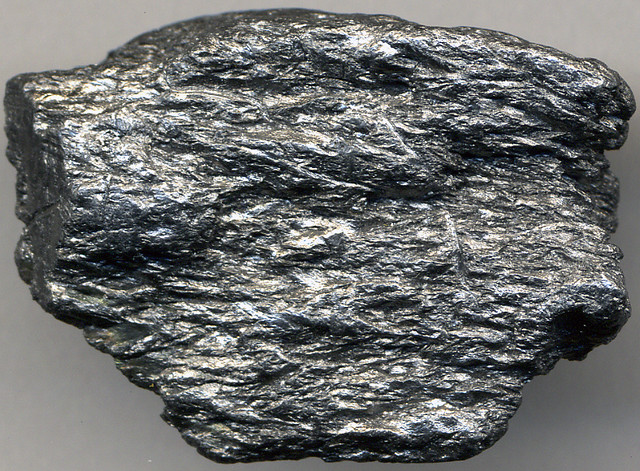
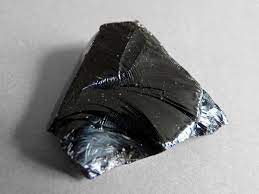
Identify
Igneous rock: Obsidian
Obsidian is a glassy, extrusive igneous rock with a felsic composition, and is typically black in color but may also be rust-red or display whiteish ‘snowflake’ inclusions. It often displays conchoidal fracturing with very sharp edges. Obsidian is made from the rapid cooling of silica-rich lava.
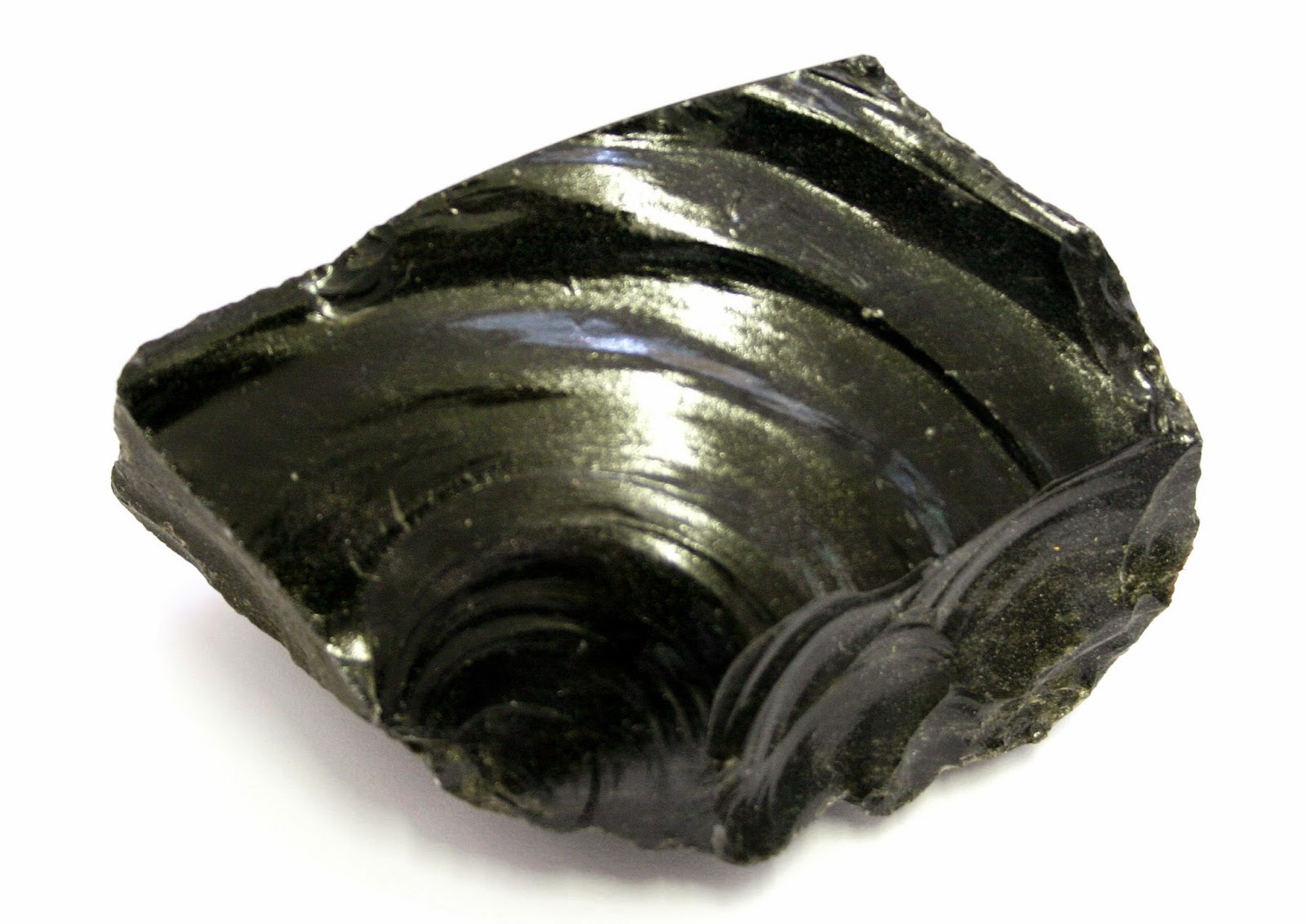
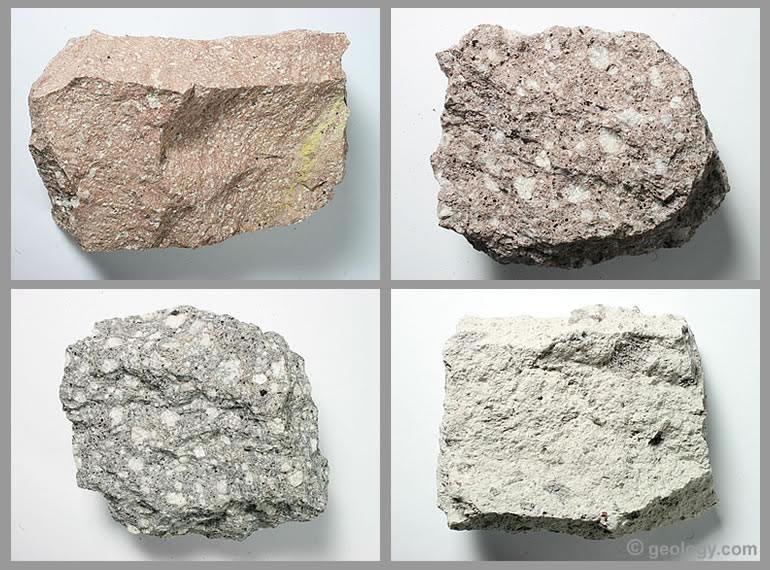
Identify
Igneous Rock: rhyolite
Rhyolite is usually light pink, reddish, light gray, or off-white in color. The bulk of the rock is made of crystal grains too small to see with the naked eye, but there may be larger crystals (phenocrysts) of quartz or feldspar interspersed throughout.
To identify rhyolite, first ensure its color is relatively light – usually light pink or light gray. Then, note that the crystals in the mass of the rock cannot be seen with the naked eye. Some larger crystals may be identifiable as quartz or feldspar. Rhyolite is dense, with no bubbles or air pockets.
A rock must meet all of these requirements to be considered a rhyolite:
Igneous – Formed from cooling lava, with interlocking crystal grains.
Fine-grained – Aphanitic or porphyritic texture with crystals invisible to the naked eye
Felsic Mineralogy – High quartz and feldspar content
Massive – No internal structures or layering
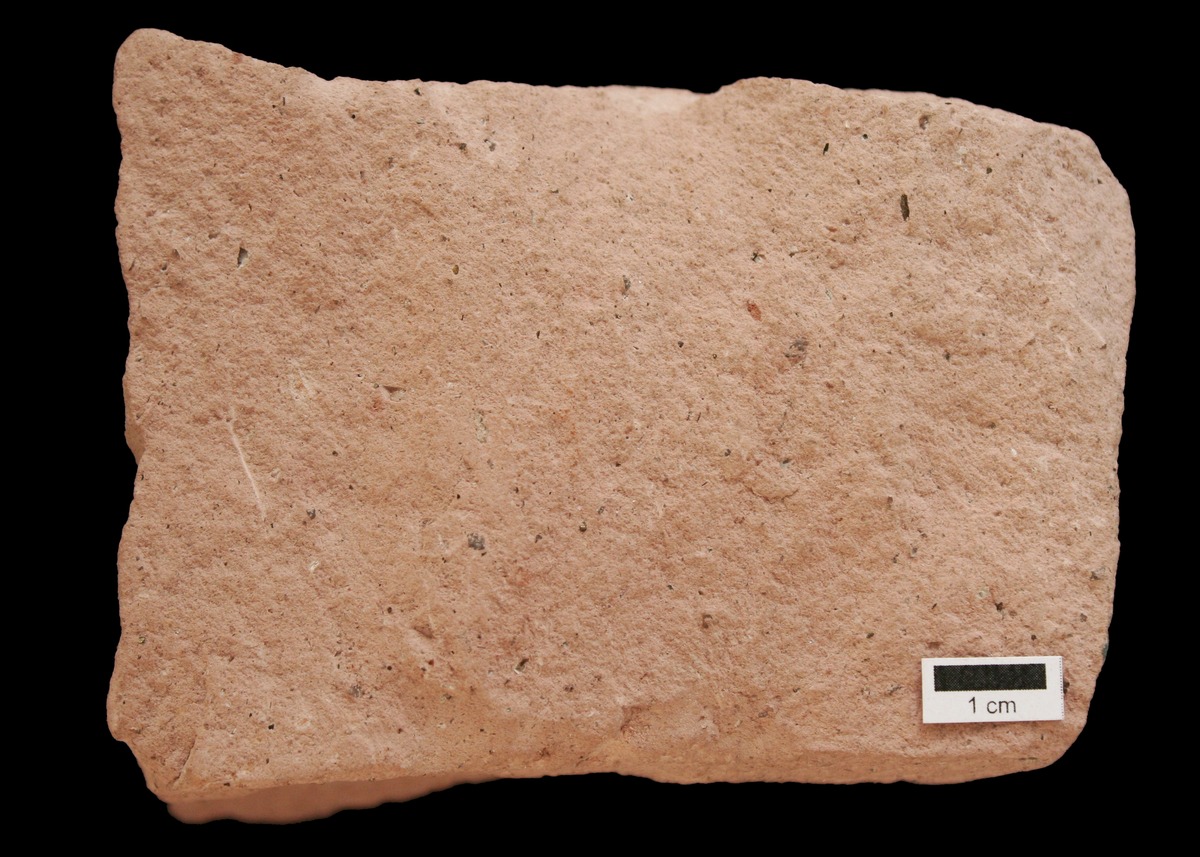
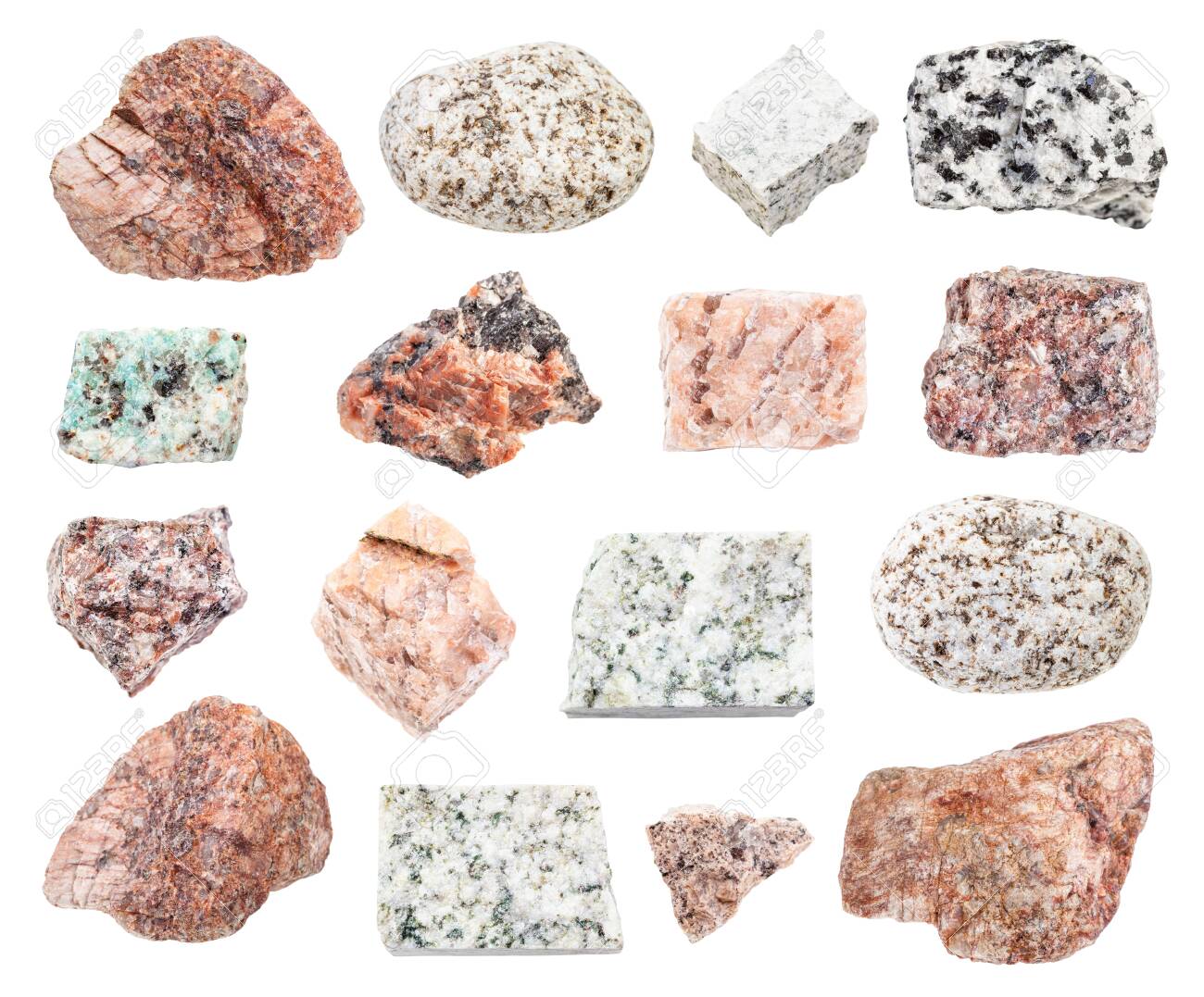
Identify
Igneous rock: Granite
Granite is an intrusive igneous rock composed primarily of feldspar, quartz, and smaller amounts of mica. It has a phaneritic texture, meaning its tightly interlocking crystals can be seen with the naked eye. It usually displays mottled colors of off-white, gray, pink, and black with no layering or banding.
Granite has a coarse-grained texture with large, interlocking crystals of translucent to off-white quartz, white to dark pink feldspar, and darker micas and amphiboles. Its crystals are roughly equal-sized and it is relatively light in color, lacking any structural features like layering, banding, or fossils.
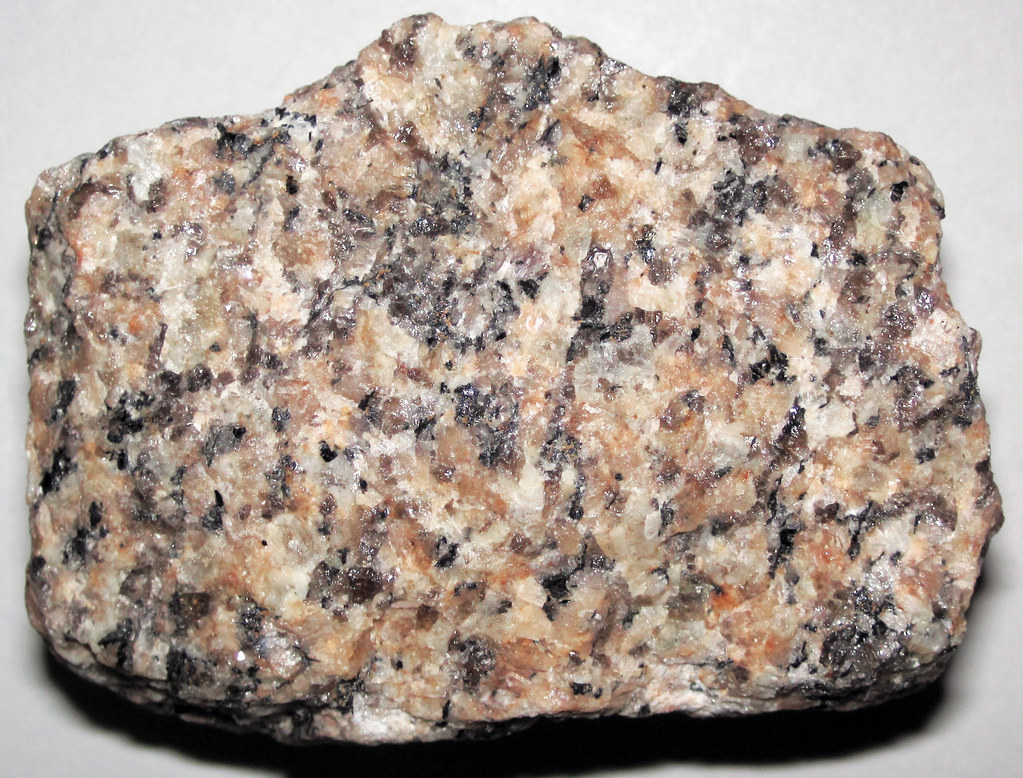
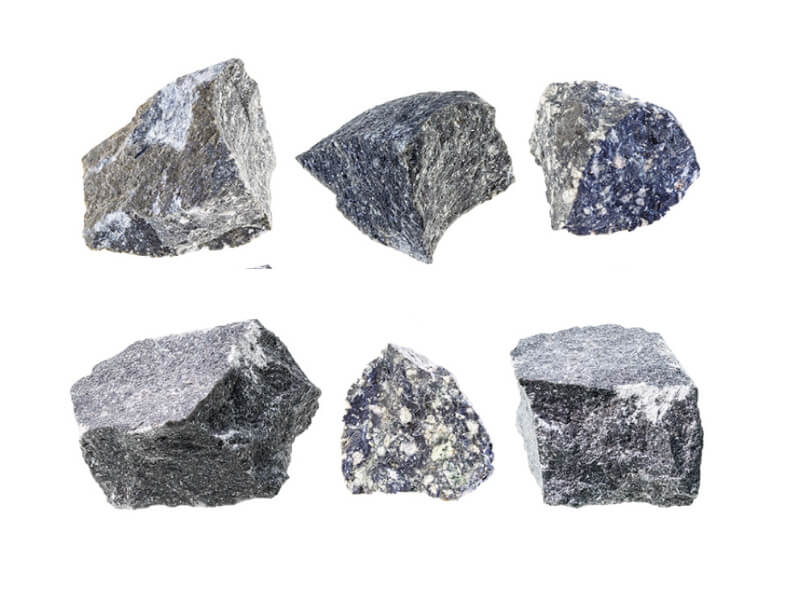
Identify
Igneous rock: Andesite
Andesite is an extrusive igneous rock composed primarily of plagioclase feldspar and large amounts of mafic minerals like hornblende. It has an aphanitic texture, meaning its interlocking crystals cannot be seen by the naked eye. Andesite comes in many colors but is usually light or dark gray, and is often porphyritic.
Andesite has a fine-grained texture with very small, interlocking crystals of white to off-white plagioclase feldspar and darker, mafic minerals like hornblende. The crystals are too small to see with the naked eye. Andesite is usually light to dark gray and often contains larger crystals called phenocrysts.
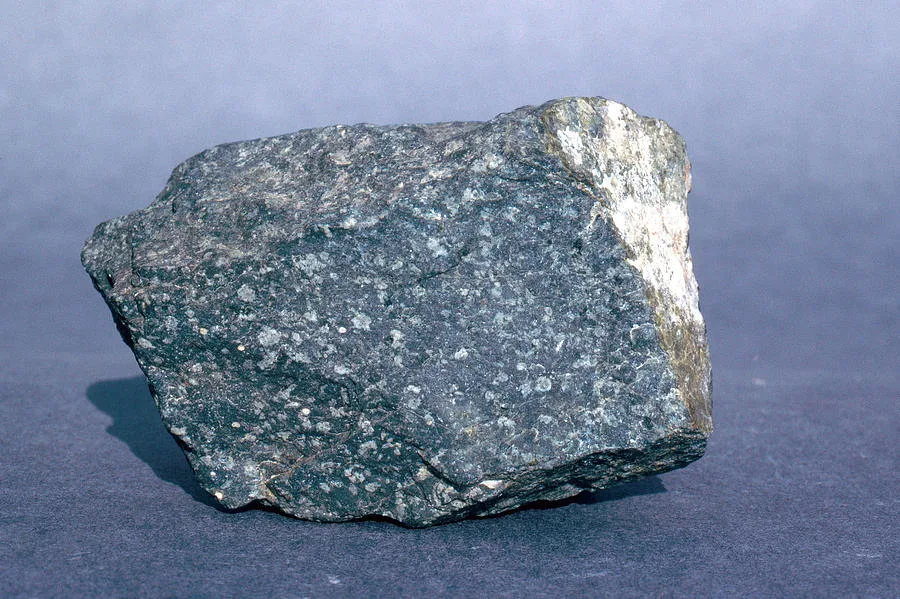
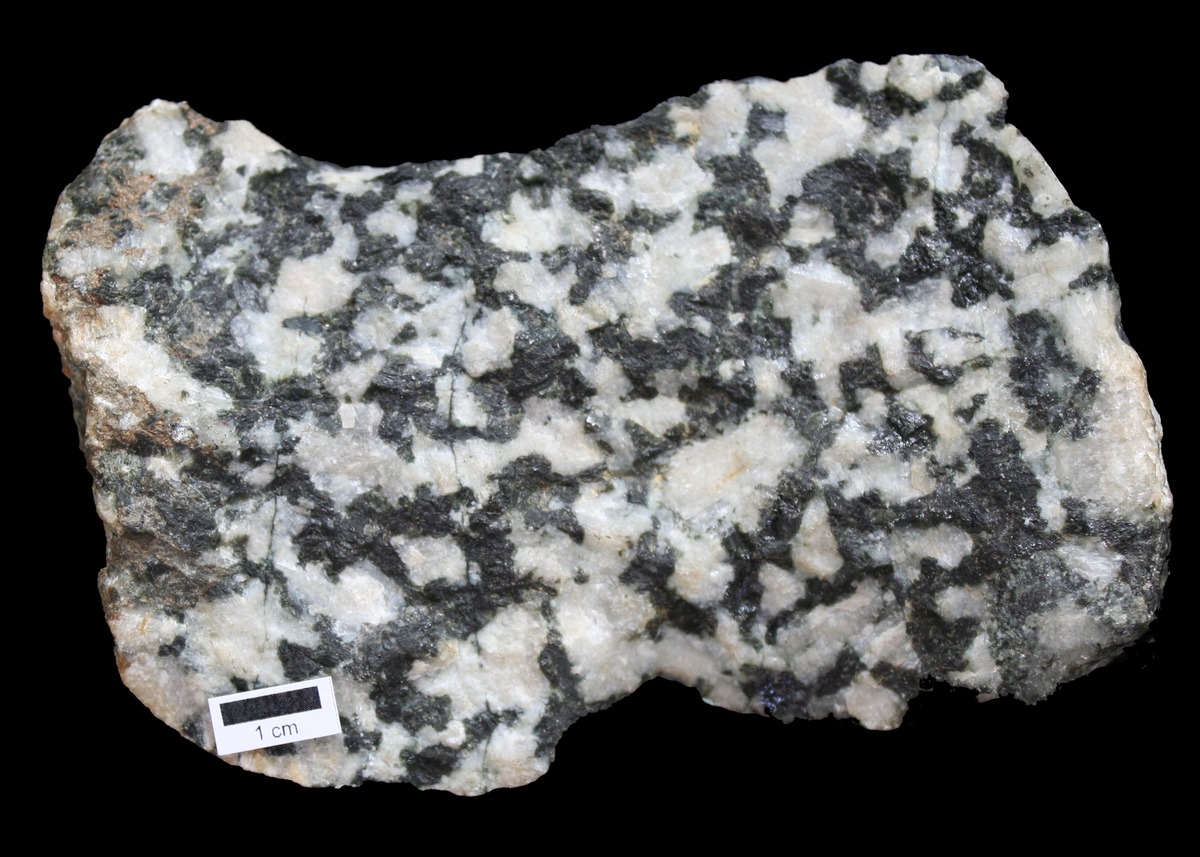
Identify
Igneous rock: Diorite
Diorite is an intrusive igneous rock composed primarily of plagioclase feldspar and smaller amounts of mafic minerals like hornblende and biotite. It has a phaneritic texture, meaning its interlocking crystals can be seen with the naked eye. It is known for having a characteristic ‘salt and pepper’ appearance.
Diorite has a coarse-grained texture with large, interlocking crystals of white to off-white plagioclase feldspar and darker, mafic minerals like hornblende, biotite, and pyroxene. Its crystals are roughly equal-sized and it is intermediate in color with a characteristic ‘salt and pepper’ appearance.
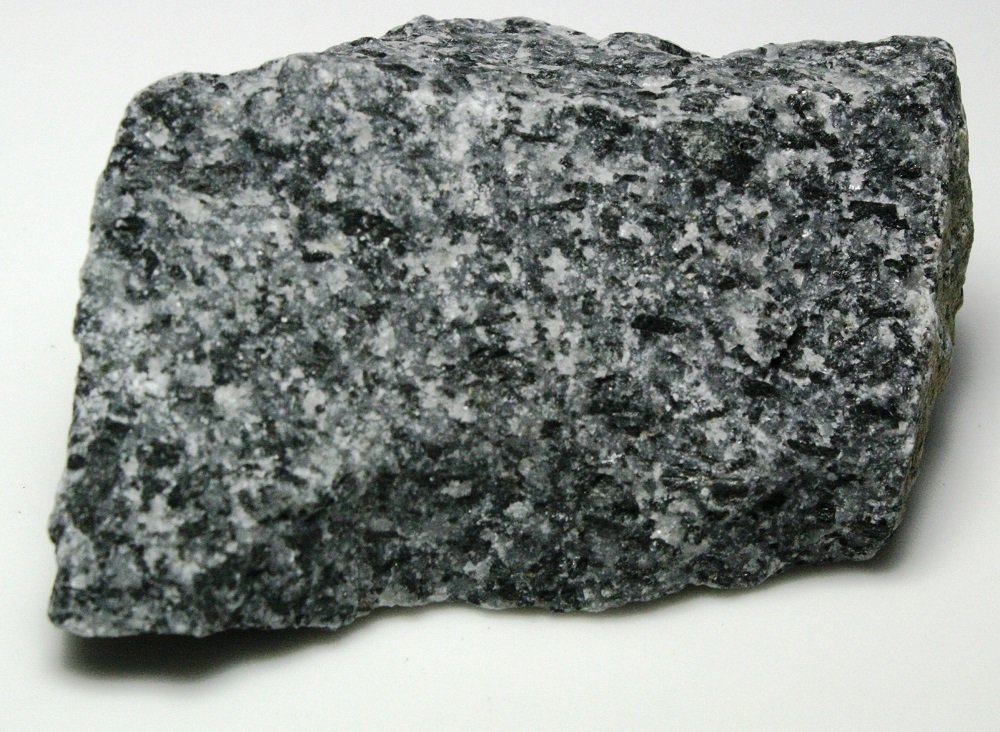
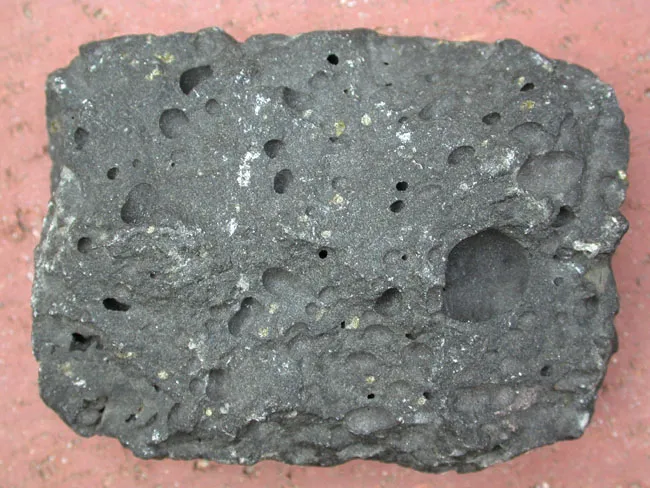
Identify
Igneous rock: Basalt
Basalt is an extrusive igneous rock composed primarily of plagioclase feldspar and large amounts of mafic minerals like pyroxene. It has an aphanitic texture, meaning its interlocking crystals cannot be seen by the naked eye. It is usually dark gray, black, or dark greenish, and is often vesicular or porphyritic.
Basalt has a fine-grained texture with very small, interlocking crystals of white to off-white plagioclase feldspar and darker, mafic minerals like pyroxene. The crystals are too small to see with the naked eye. Basalt is usually gray, brown, or black, and often contains features like vesicles and phenocrysts.
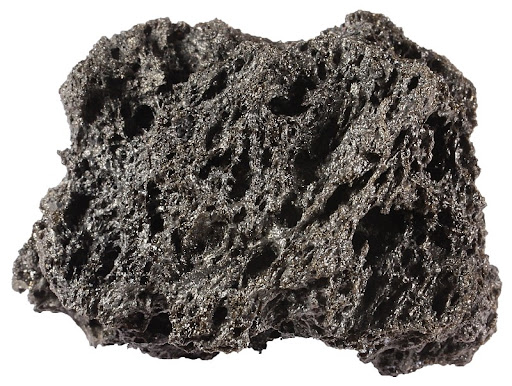
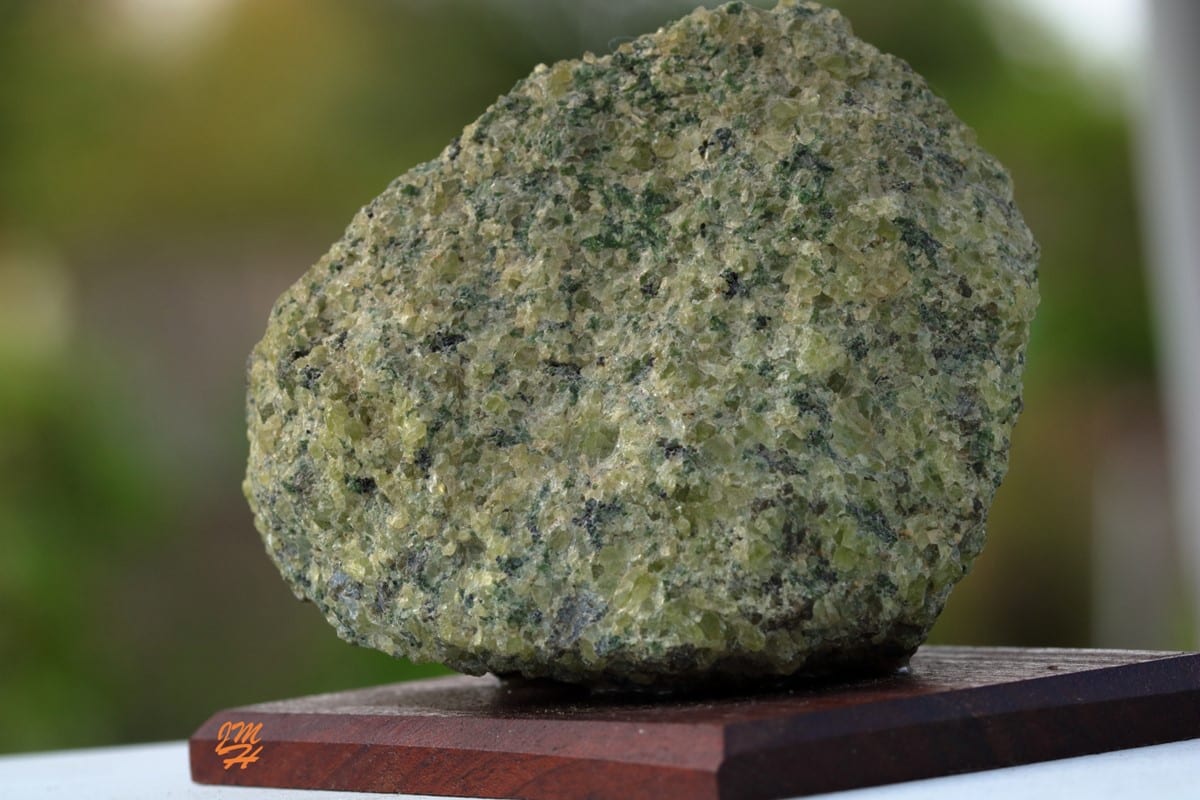
Identify
Igneous rock: Peridotite
Peridotite is a generic name used for coarse-grained, dark-colored, ultramafic igneous rocks. Peridotites usually contain olivine as their primary mineral, frequently with other mafic minerals such as pyroxenes and amphiboles. Their silica content is low compared to other igneous rocks, and they contain very little quartz and feldspar.
Most peridotite is green in color due to its high olivine content. However, peridotites can range in color from greenish-gray[44][45] to nearly black[46] to pale yellowish-green.[47] Peridotite weathers to form a distinctive brown crust in subaerial exposures[48] and to a deep orange color in submarine exposures.[49]
Peridotites can take on a massive form or may be in layers on a variety of size scales.[50] Layered peridotites may form the base layers of layered intrusions.[51] These are characterized by cumulate textures, characterized by a fabric of coarse (>5mm) interlocking euhedral (well-formed) crystals in a groundmass of finer crystals formed from liquid magma trapped in the cumulate. Many show poikilitic texture in which crystallization of this liquid has produced crystals that overgrow and enclose the original cumulus crystals (called chadrocrysts).[52]
Another texture is a well-annealed texture of equal sized anhedral crystals with straight grain boundaries intersecting at 120°. This may result when slow cooling allowed recrystallization to minimize surface energy. Cataclastic texture, showing irregular fractures and deformation twinning of olivine grains, is common in peridotites because of the deformation associated with their tectonic mode of emplacement.[50]
![<p>Igneous rock: Peridotite</p><p><strong>Peridotite</strong><span style="font-family: arial"> is a generic name used for coarse-grained, dark-colored, ultramafic igneous rocks. Peridotites usually contain </span><a target="_blank" rel="noopener noreferrer nofollow" href="https://geology.com/minerals/olivine.shtml"><strong>olivine</strong></a><span style="font-family: arial"> as their primary </span><a target="_blank" rel="noopener noreferrer nofollow" href="https://geology.com/minerals/"><strong>mineral</strong></a><span style="font-family: arial">, frequently with other mafic minerals such as </span><a target="_blank" rel="noopener noreferrer nofollow" href="https://geology.com/minerals/pyroxene.shtml"><strong>pyroxenes</strong></a><span style="font-family: arial"> and amphiboles. Their silica content is low compared to other </span><a target="_blank" rel="noopener noreferrer nofollow" href="https://geology.com/rocks/igneous-rocks.shtml"><strong>igneous rocks</strong></a><span style="font-family: arial">, and they contain very little </span><a target="_blank" rel="noopener noreferrer nofollow" href="https://geology.com/minerals/quartz.shtml"><strong>quartz</strong></a><span style="font-family: arial"> and </span><a target="_blank" rel="noopener noreferrer nofollow" href="https://geology.com/minerals/feldspar.shtml"><strong>feldspar</strong></a><span style="font-family: arial">.</span></p><p>Most peridotite is green in color due to its high olivine content. However, peridotites can range in color from greenish-gray<a target="_blank" rel="noopener noreferrer nofollow" href="https://en.wikipedia.org/wiki/Peridotite#cite_note-44"><sup>[44]</sup></a><a target="_blank" rel="noopener noreferrer nofollow" href="https://en.wikipedia.org/wiki/Peridotite#cite_note-45"><sup>[45]</sup></a> to nearly black<a target="_blank" rel="noopener noreferrer nofollow" href="https://en.wikipedia.org/wiki/Peridotite#cite_note-46"><sup>[46]</sup></a> to pale yellowish-green.<a target="_blank" rel="noopener noreferrer nofollow" href="https://en.wikipedia.org/wiki/Peridotite#cite_note-47"><sup>[47]</sup></a> Peridotite weathers to form a distinctive brown crust in subaerial exposures<a target="_blank" rel="noopener noreferrer nofollow" href="https://en.wikipedia.org/wiki/Peridotite#cite_note-48"><sup>[48]</sup></a> and to a deep orange color in submarine exposures.<a target="_blank" rel="noopener noreferrer nofollow" href="https://en.wikipedia.org/wiki/Peridotite#cite_note-49"><sup>[49]</sup></a></p><p style="text-align: start">Peridotites can take on a massive form or may be in layers on a variety of size scales.<a target="_blank" rel="noopener noreferrer nofollow" href="https://en.wikipedia.org/wiki/Peridotite#cite_note-FOOTNOTEBlattTracy199653-50"><sup>[50]</sup></a> Layered peridotites may form the base layers of layered intrusions.<a target="_blank" rel="noopener noreferrer nofollow" href="https://en.wikipedia.org/wiki/Peridotite#cite_note-FOOTNOTEPhilpottsAgue2009384%E2%80%93386-51"><sup>[51]</sup></a> These are characterized by <a target="_blank" rel="noopener noreferrer nofollow" class="mw-redirect" href="https://en.wikipedia.org/wiki/Cumulate_texture">cumulate textures</a>, characterized by a <a target="_blank" rel="noopener noreferrer nofollow" href="https://en.wikipedia.org/wiki/Fabric_(geology)">fabric</a> of coarse (>5mm) interlocking euhedral (well-formed) crystals in a groundmass of finer crystals formed from liquid magma trapped in the cumulate. Many show <a target="_blank" rel="noopener noreferrer nofollow" href="https://en.wikipedia.org/wiki/Poikilitic_texture">poikilitic texture</a> in which crystallization of this liquid has produced crystals that overgrow and enclose the original cumulus crystals (called <em>chadrocrysts</em>).<a target="_blank" rel="noopener noreferrer nofollow" href="https://en.wikipedia.org/wiki/Peridotite#cite_note-FOOTNOTEBlattTracy1996130%E2%80%93131-52"><sup>[52]</sup></a></p><p style="text-align: start">Another texture is a <em>well-annealed</em> texture of equal sized anhedral crystals with straight grain boundaries intersecting at 120°. This may result when slow cooling allowed recrystallization to minimize surface energy. Cataclastic texture, showing irregular fractures and <a target="_blank" rel="noopener noreferrer nofollow" class="mw-redirect" href="https://en.wikipedia.org/wiki/Deformation_twinning">deformation twinning</a> of olivine grains, is common in peridotites because of the deformation associated with their tectonic mode of emplacement.<a target="_blank" rel="noopener noreferrer nofollow" href="https://en.wikipedia.org/wiki/Peridotite#cite_note-FOOTNOTEBlattTracy199653-50"><sup>[50]</sup></a></p><p></p>](https://knowt-user-attachments.s3.amazonaws.com/e4134d22-1111-407b-9c1f-5ba9b4d0fbf7.jpeg)
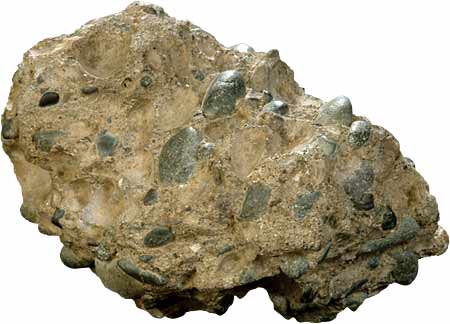
Identify
Sedimentary rock: Conglomerate
Conglomerate is a clastic sedimentary rock made up of rounded clasts that are greater than two millimeters in diameter. The spaces between the clasts are generally filled with sand- and clay-size particles. The rock is bound together by a cement that is usually composed of calcite or quartz.
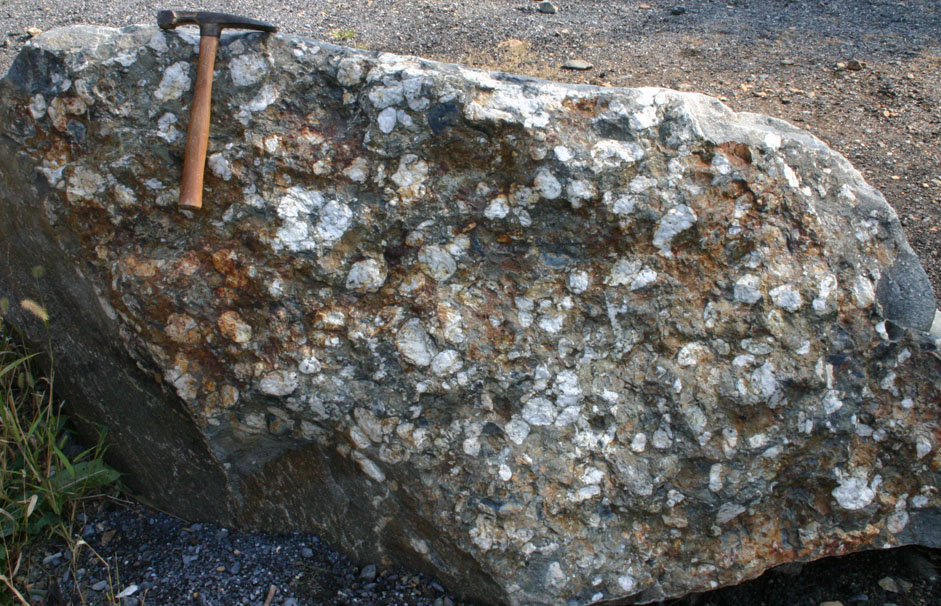
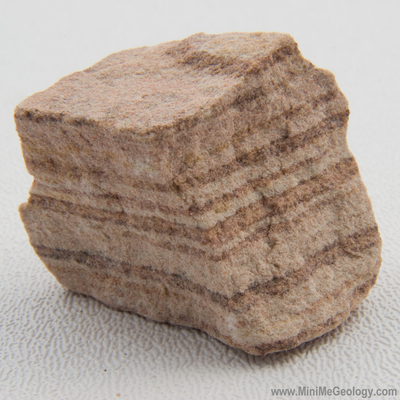
Identify
Sedimentary rock: Sandstone
Sandstones are made of sand grains that have been cemented together. Like sandpaper, sandstones usually have a rough, granular texture, but to really identify a sandstone you have to peer closely at its surface and look for individual sand grains. Since the grain diameters range from 2 mm all the way down to only 0.06 mm, you may need a good magnifying lense to see the sand grains in a fine-grained sandstone.
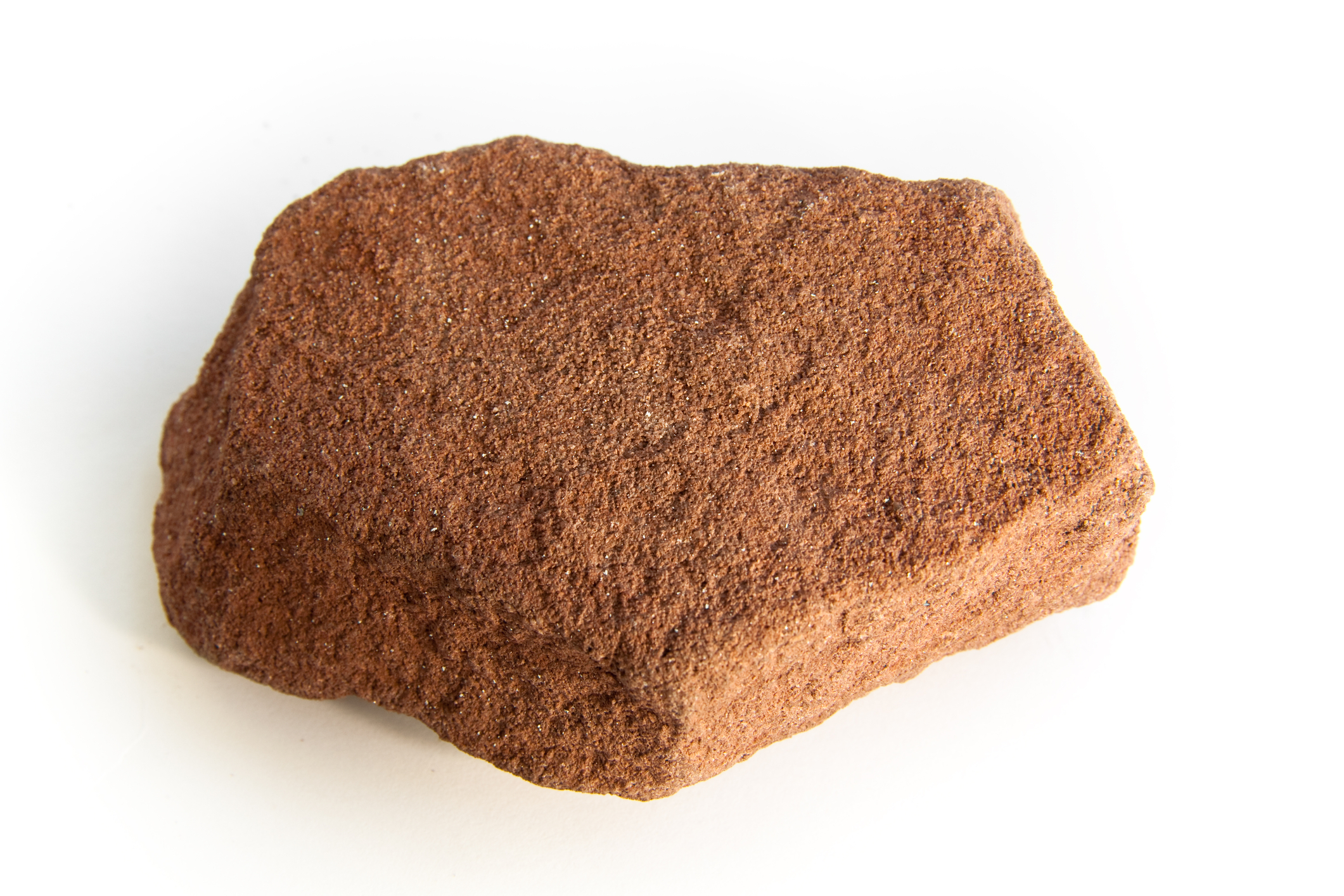
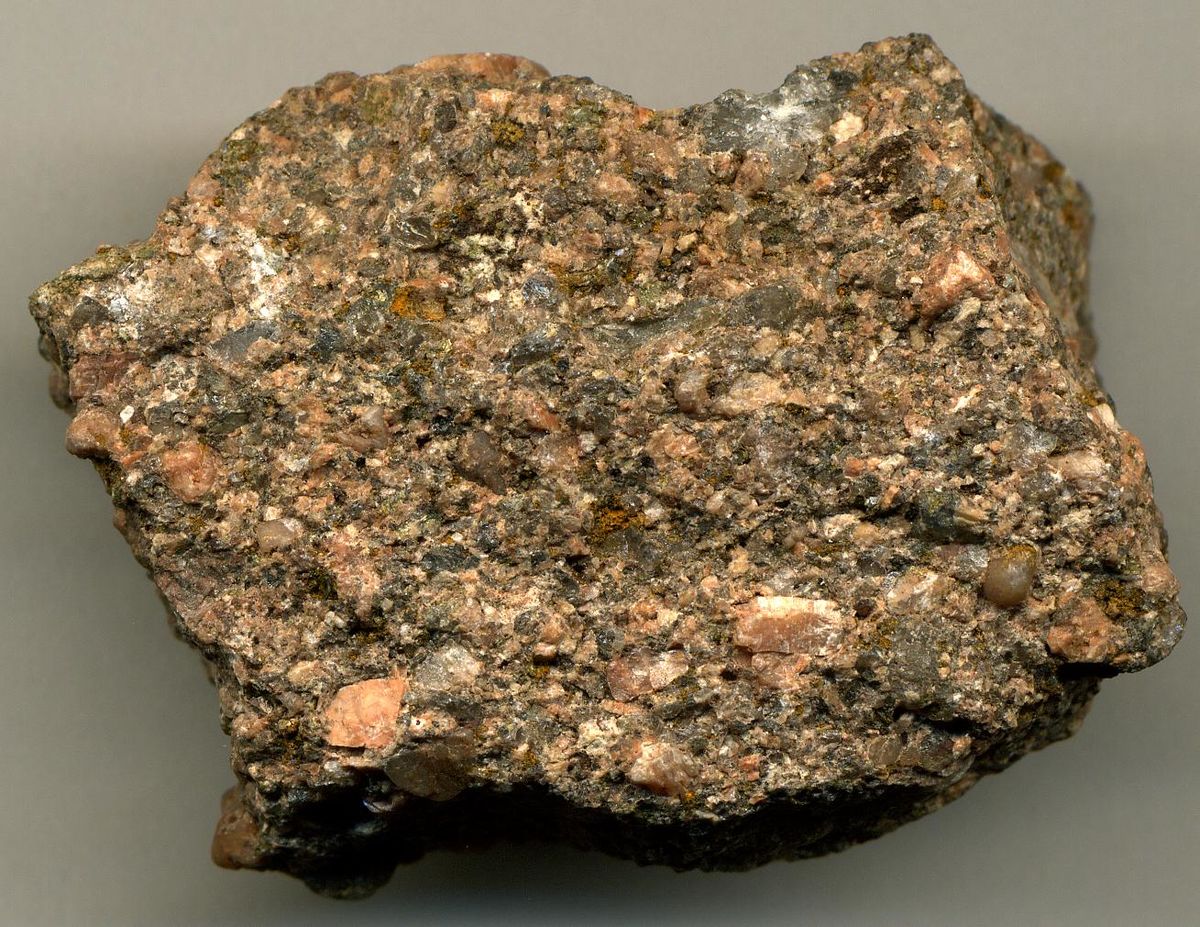
Identify
Sedimentary rock: Arkose
Arkose is a detrital sedimentary rock, specifically a type of sandstone containing at least 25% feldspar.[2][3] Arkosic sand is sand that is similarly rich in feldspar, and thus the potential precursor of arkose.
Quartz is commonly the dominant mineral component, and some mica is often present. Apart from the mineral content, rock fragments may also be a significant component. Arkose usually contains small amounts of calcite cement, which causes it to effervesce (fizz) slightly in dilute hydrochloric acid; sometimes the cement also contains iron oxide.
Arkose is typically grey to reddish in colour. The sand grains making up an arkose may range from fine to very coarse, but tend toward the coarser end of the scale. Fossils are rare in arkose, due to the depositional processes that form it, although bedding is frequently visible.
![<p><span style="font-family: sans-serif">Sedimentary rock: Arkose</span></p><p><strong>Arkose</strong> is a <a target="_blank" rel="noopener noreferrer nofollow" class="mw-redirect" href="https://en.wikipedia.org/wiki/Detrital">detrital</a> <a target="_blank" rel="noopener noreferrer nofollow" href="https://en.wikipedia.org/wiki/Sedimentary_rock">sedimentary rock</a>, specifically a type of <a target="_blank" rel="noopener noreferrer nofollow" href="https://en.wikipedia.org/wiki/Sandstone">sandstone</a> containing at least 25% <a target="_blank" rel="noopener noreferrer nofollow" href="https://en.wikipedia.org/wiki/Feldspar">feldspar</a>.<a target="_blank" rel="noopener noreferrer nofollow" href="https://en.wikipedia.org/wiki/Arkose#cite_note-Folk1974-2"><sup>[2]</sup></a><a target="_blank" rel="noopener noreferrer nofollow" href="https://en.wikipedia.org/wiki/Arkose#cite_note-Stow2005-3"><sup>[3]</sup></a> <strong>Arkosic sand</strong> is <a target="_blank" rel="noopener noreferrer nofollow" href="https://en.wikipedia.org/wiki/Sand">sand</a> that is similarly rich in feldspar, and thus the potential precursor of arkose.</p><p style="text-align: start"><a target="_blank" rel="noopener noreferrer nofollow" href="https://en.wikipedia.org/wiki/Quartz">Quartz</a> is commonly the dominant mineral component, and some <a target="_blank" rel="noopener noreferrer nofollow" href="https://en.wikipedia.org/wiki/Mica">mica</a> is often present. Apart from the mineral content, rock fragments may also be a significant component. Arkose usually contains small amounts of <a target="_blank" rel="noopener noreferrer nofollow" href="https://en.wikipedia.org/wiki/Calcite">calcite</a> cement, which causes it to effervesce (fizz) slightly in dilute <a target="_blank" rel="noopener noreferrer nofollow" href="https://en.wikipedia.org/wiki/Hydrochloric_acid">hydrochloric acid</a>; sometimes the cement also contains <a target="_blank" rel="noopener noreferrer nofollow" href="https://en.wikipedia.org/wiki/Iron_oxide">iron oxide</a>.</p><p style="text-align: start">Arkose is typically grey to reddish in colour. The sand grains making up an arkose may range from fine to very coarse, but tend toward the coarser end of the scale. <a target="_blank" rel="noopener noreferrer nofollow" href="https://en.wikipedia.org/wiki/Fossil">Fossils</a> are rare in arkose, due to the depositional processes that form it, although <a target="_blank" rel="noopener noreferrer nofollow" href="https://en.wikipedia.org/wiki/Bed_(geology)">bedding</a> is frequently visible.</p>](https://knowt-user-attachments.s3.amazonaws.com/2429d43e-db43-4b9d-b236-40e0e064b605.jpeg)
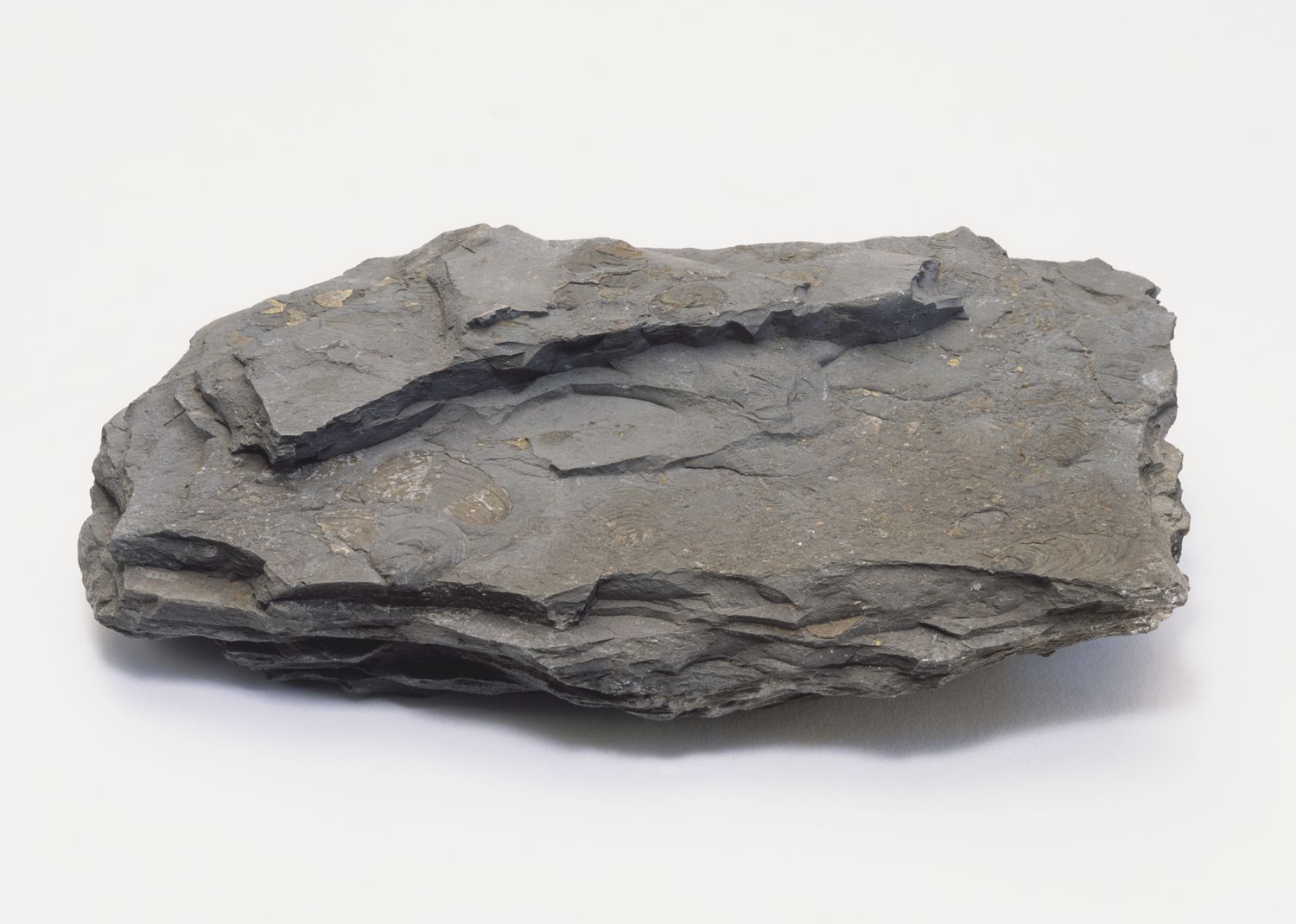
Identify
Sedimentary rock: Shale
Shale is a fine-grained sedimentary rock composed primarily of clay minerals and other clay-sized particles of minerals like quartz and calcite. It is laminated and fissile, easily breaking along bedding planes. Shale forms from the deposition and compaction of clay-sized minerals in a low-energy environment.
Shale is most often dark gray or black but can be almost any color including red, green, and brown. It is very fine-grained, made of particles invisible to the naked eye. It has a layered, laminated appearance with many thin, parallel beds. The edges of shale are usually sharp due to its fissile tendency.
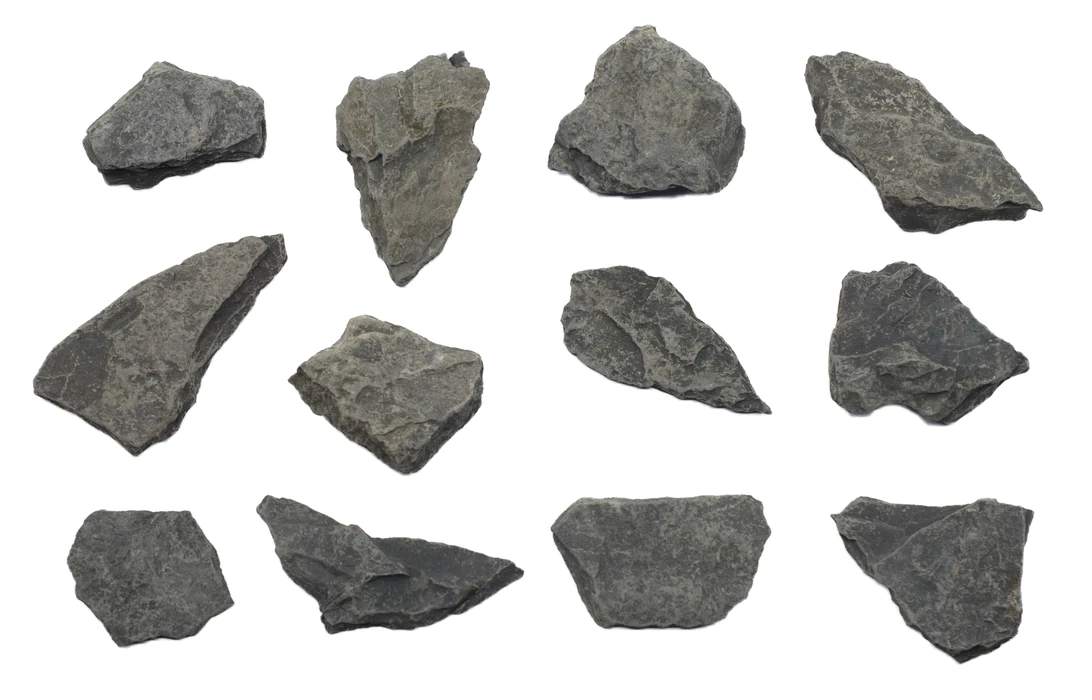
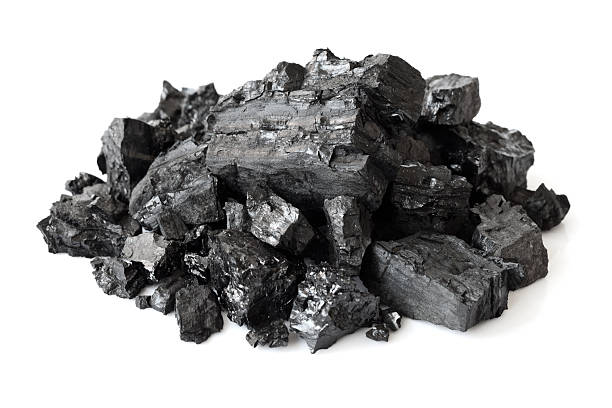
Identify
Sedimentary rock: Coal
Coal is an organic sedimentary rock that forms from the accumulation and preservation of plant materials, usually in a swamp environment. Coal is a combustible rock and, along with oil and natural gas, it is one of the three most important fossil fuels. Coal has a wide range of uses; the most important use is for the generation of electricity.
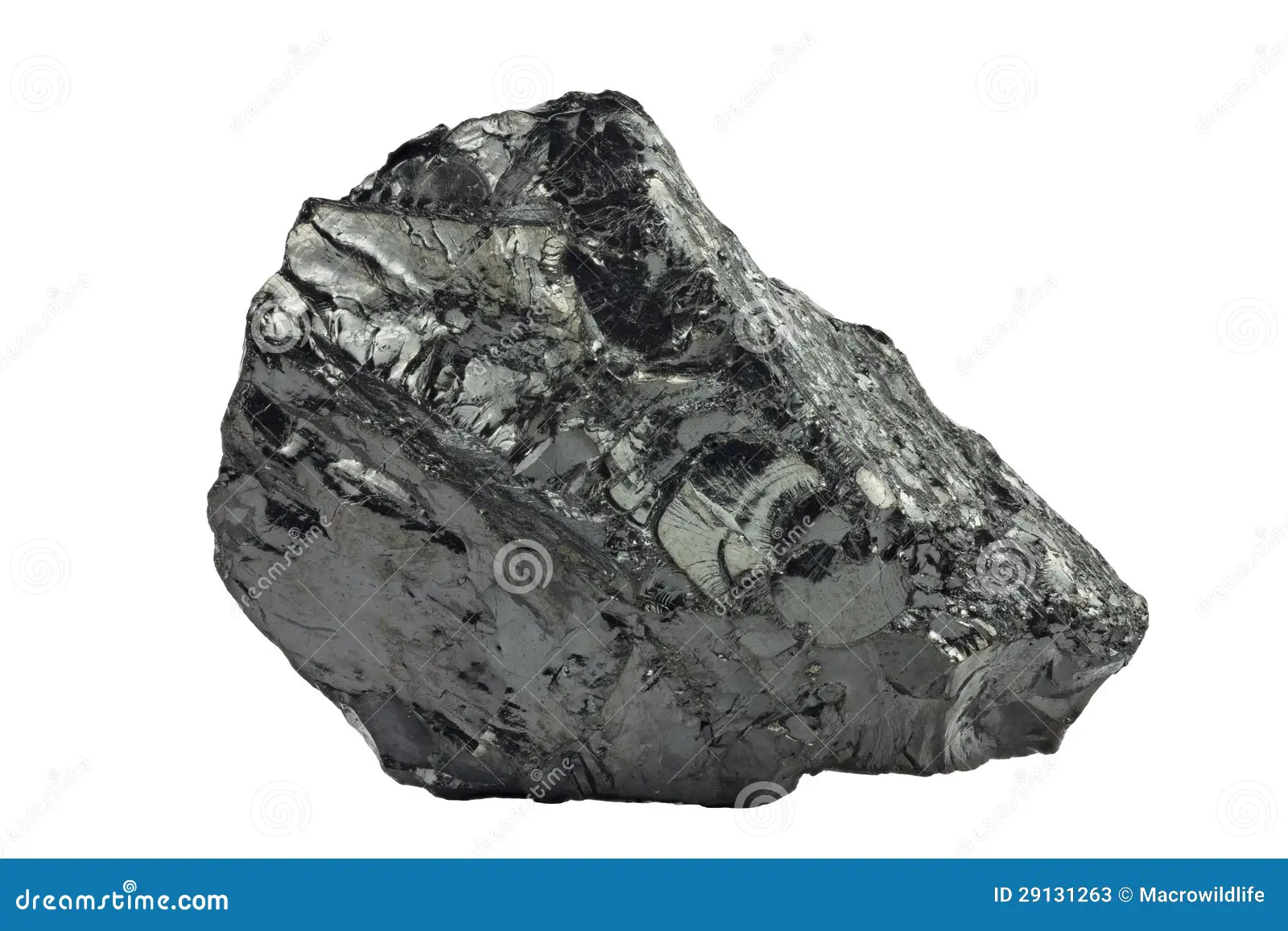
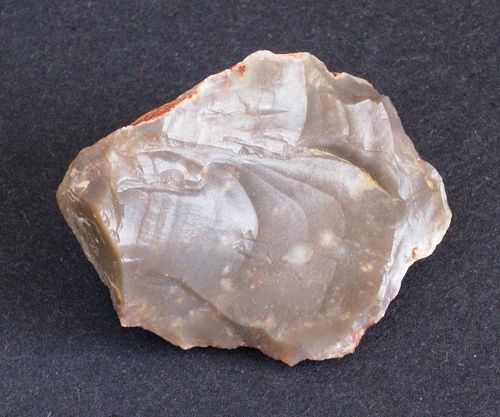
Identify
Sedimentary rock: Chert
Chert is a biochemical sedimentary rock made from microcrystalline quartz. It is very hard – registering a 7 on the Mohs hardness scale, and displays conchoidal fracturing. Chert can almost any color, but is usually gray, brown, red, or green. It has many subvarieties including flint, jasper, agate, and onyx.
In general, chert looks like a mass of sediment with relatively smooth, waxy-looking surfaces. It displays conchoidal fracturing resulting in very sharp edges. Chert can be almost any color but is most commonly grey, brown, reddish, or light green. Most varieties are opaque, but it can also be translucent.
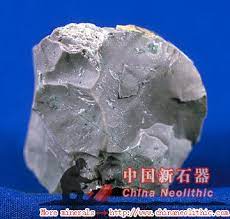
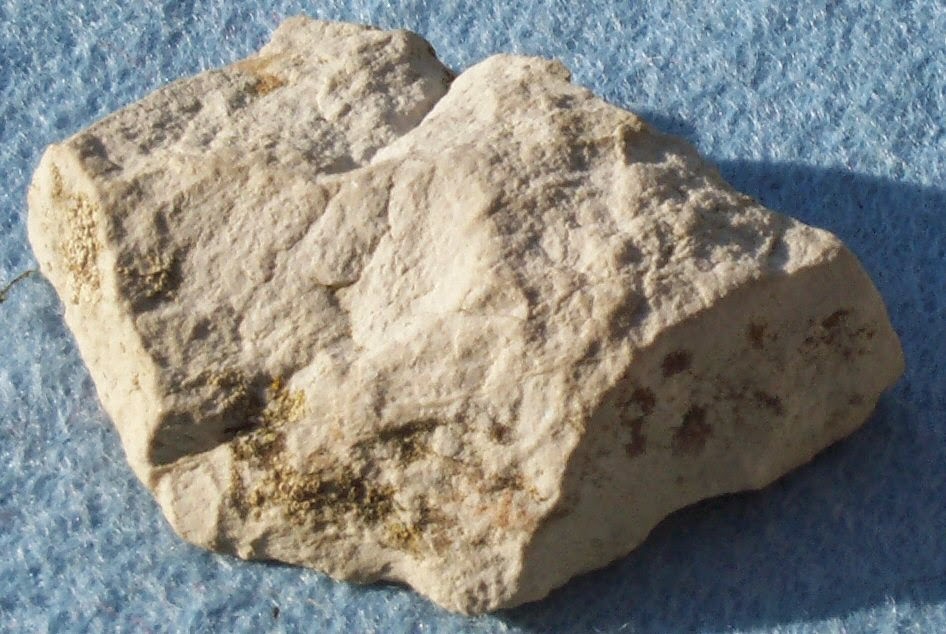
Identify
Sedimentary rock: Limestone
Limestone is a sedimentary rock made primarily from calcium carbonate, usually in the form of calcite and aragonite. Its grains vary in size and can consist of a variety of materials including shells, coral, and mud. It is typically off-white to gray in color and usually forms in shallow marine environments.
Limestone is usually off-white to gray in color, but may also have tinges of yellow, brown, or pink. Many varieties of limestone are massive with little to no identifying features, while others are almost entirely composed of shells and fossils and may contain other features like nodules and bedding planes.
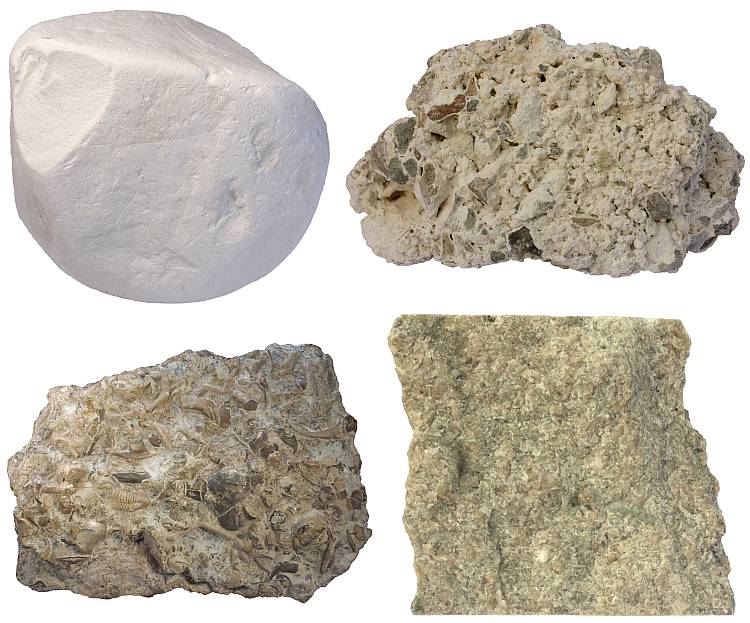
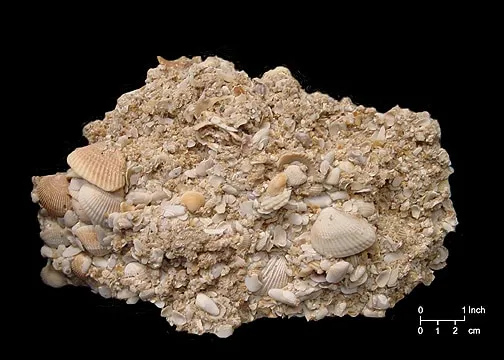
Identify
Sedimentary rock: Coquina
Coquina is a clastic sedimentary rock made almost entirely out of large (2 mm or larger) shell fragments. The shell fragments are cemented together by calcite, and it is technically a variety of limestone. Coquina forms almost exclusively in high-energy marine environments like beaches and tidal channels.
Coquina looks like shells and broken shell fragments fused together. This mass of shell fragments is loosely cemented together, often with a great deal of space (porosity) between them. Coquina inherits its color from the shells from which it is formed and is almost always white, off-white, or light gray.
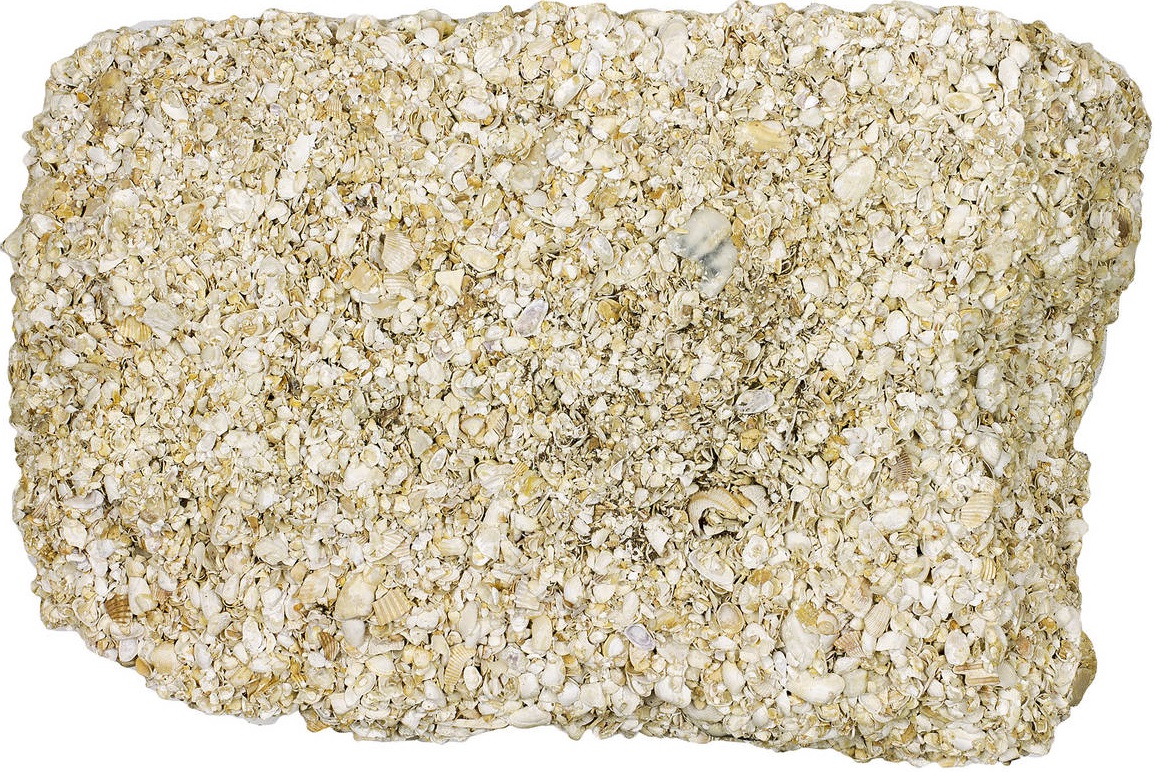
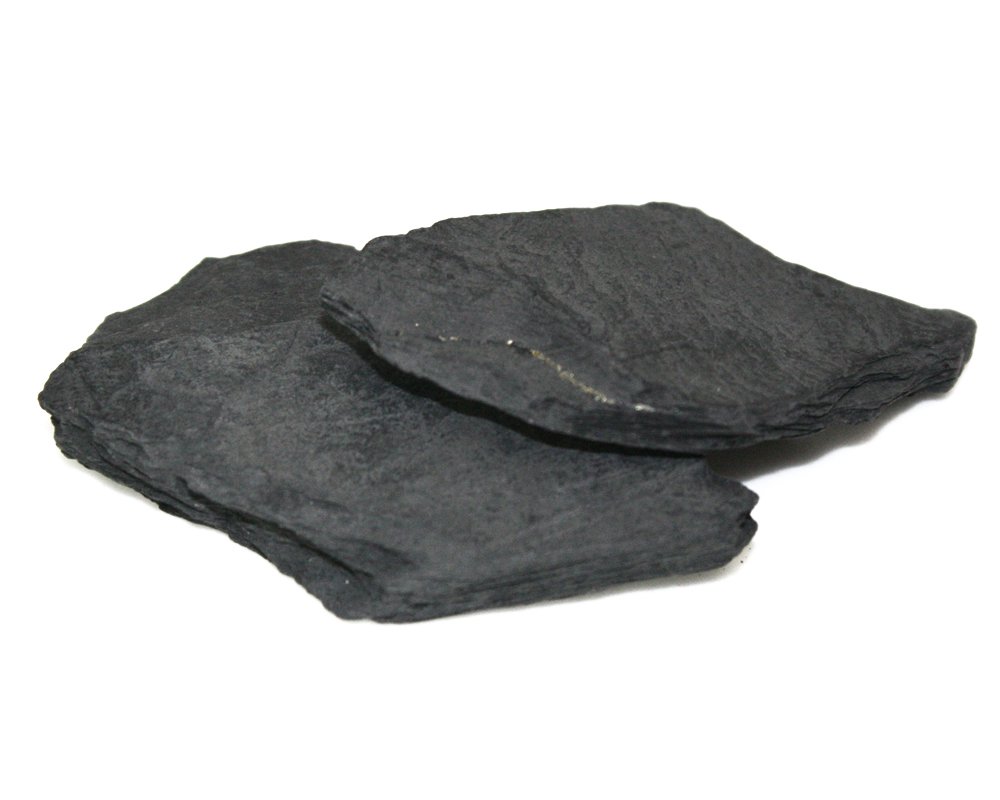
Identify
Metamorphic rock: slate
Slate is a very fine-grained foliated metamorphic rock primarily made of quartz and platy clay minerals like illite and chlorite. Accessory minerals like hematite and pyrite are common. Slate forms from regional metamorphism of mudstones and displays characteristic slaty cleavage, easily splitting into thin slabs.
Slate is very fine-grained, made of minuscule mineral crystals invisible to the naked eye. It displays slaty cleavage and breaks easily along flat surfaces. It is usually light to dark gray but comes in many colors including green, reddish, and purple. Larger crystals of minerals like pyrite may be present.
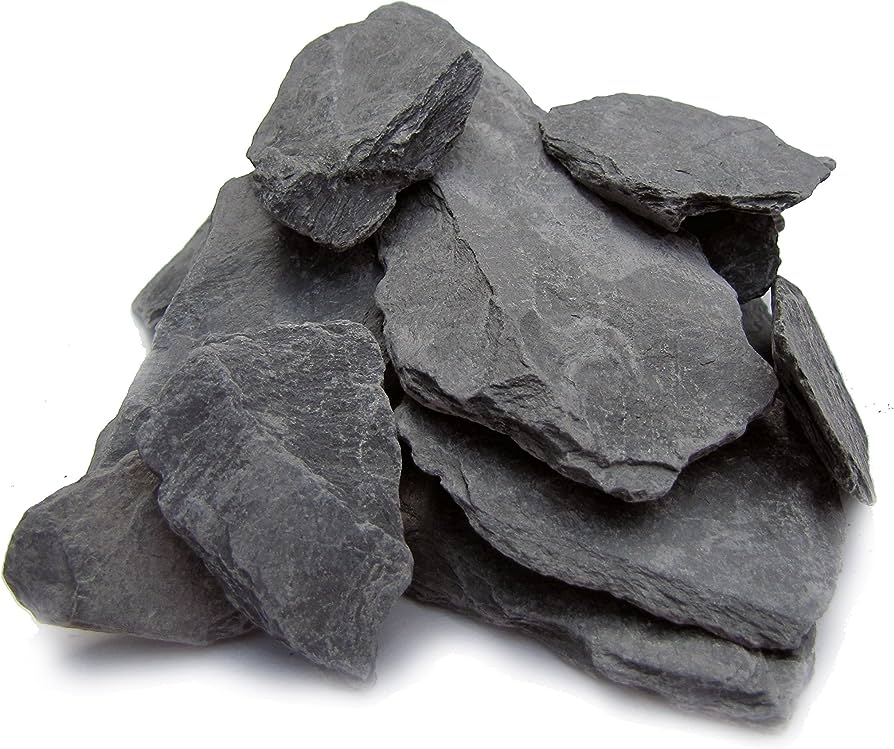
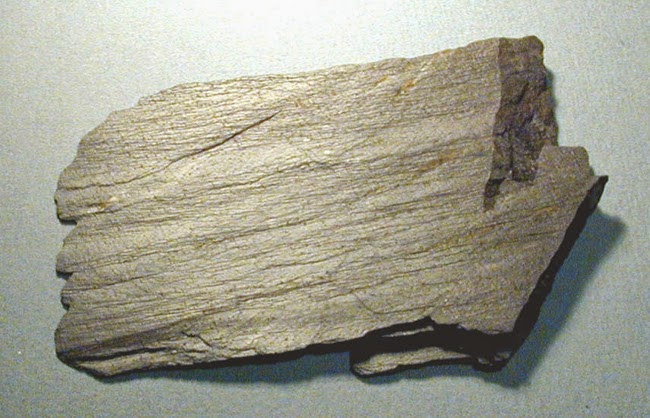
Identify
Metamorphic rock: phyllite
Phyllite is a fine-grained foliated metamorphic rock primarily made of quartz, chlorite, and mica minerals like muscovite and sericite. Known for its characteristic silky sheen, it often appears wavy or crinkled and tends to easily split into thin sheets. Phyllite forms from the continued metamorphism of slate.
Phyllite is fine-grained, made of minuscule mineral crystals invisible to the naked eye. Its foliation often appears wavy and the surface has a distinct silky sheen. Phyllite can easily be split into thin sheets. It is usually gray, black, or greenish gray. Larger crystals of minerals like garnet may be present.
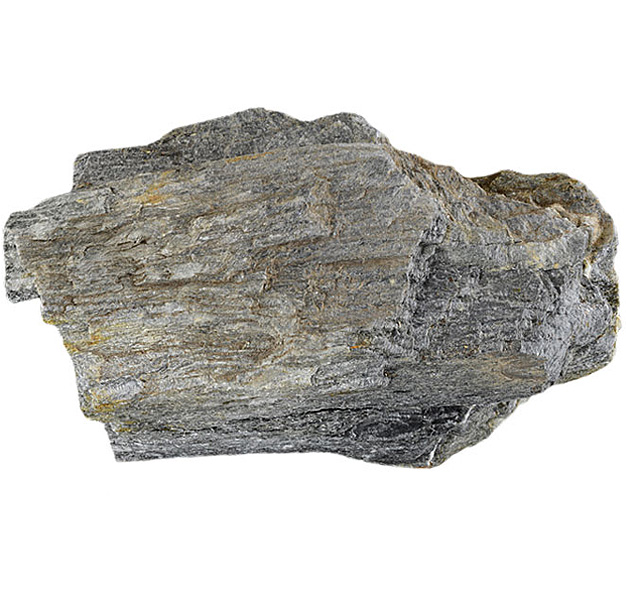
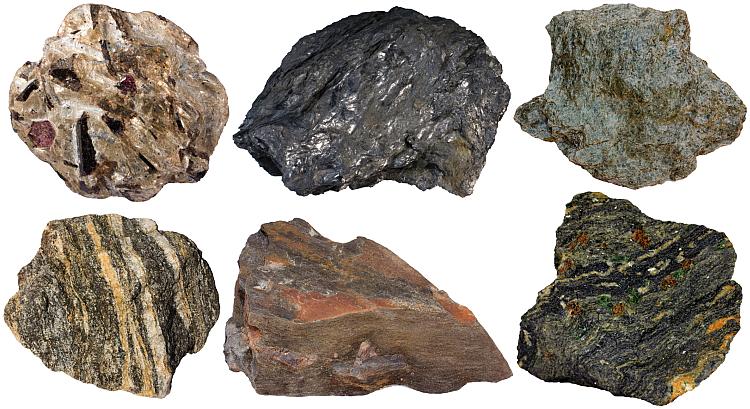
Identify
Metamorphic rock: schist
Schist is a medium-grained foliated metamorphic rock primarily made of platy minerals like biotite, muscovite, talc, and chlorite, with smaller amounts of bulky minerals like quartz and feldspar. The platy minerals are oriented parallel to one another, making it easy to break the rock into thin plates.
Schist has large, flattened grains of platy minerals like muscovite, biotite, and chlorite. These crystals are elongated and oriented roughly parallel to one another. Quartz and feldspar are often present and may or may not be elongated. Larger crystals of bulky minerals like garnet are commonly included.
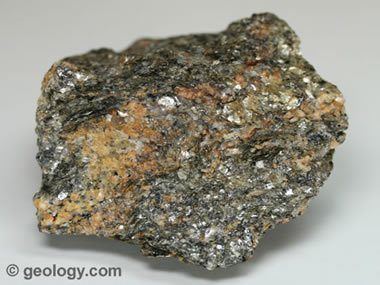
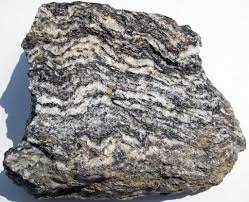
Identify
Metamorphic rock: Gneiss
Gneiss is a coarse-grained foliated metamorphic rock that displays alternating bands of light and dark minerals, formed from high-grade metamorphism. The light minerals are typically interlocking crystals of quartz and feldspar, while the dark bands are made of mafic minerals and often display a preferred orientation.
Gneiss has large, interlocking crystals which are easily visible to the naked eye. The crystals are arranged in alternating bands or lenses of light and dark minerals. The bands run parallel to one another and can sometimes appear wavy. Larger crystals of metamorphic minerals like garnet and kyanite may be present.
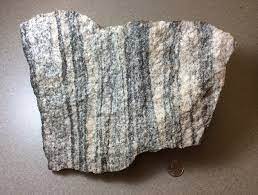
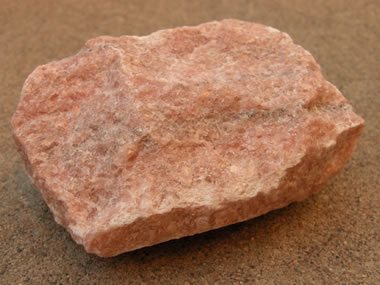
marble
Metamorphic rock: marble
Marble is a metamorphic rock that forms when limestone is subjected to the heat and pressure of metamorphism. It is composed primarily of the mineral calcite (CaCO3) and usually contains other minerals, such as clay minerals, micas, quartz, pyrite, iron oxides, and graphite.
Under the conditions of metamorphism, the calcite in the limestone recrystallizes to form a rock that is a mass of interlocking calcite crystals. A related rock, dolomitic marble, is produced when dolostone is subjected to heat and pressure
Being composed of calcium carbonate, marble will react in contact with many acids, neutralizing the acid
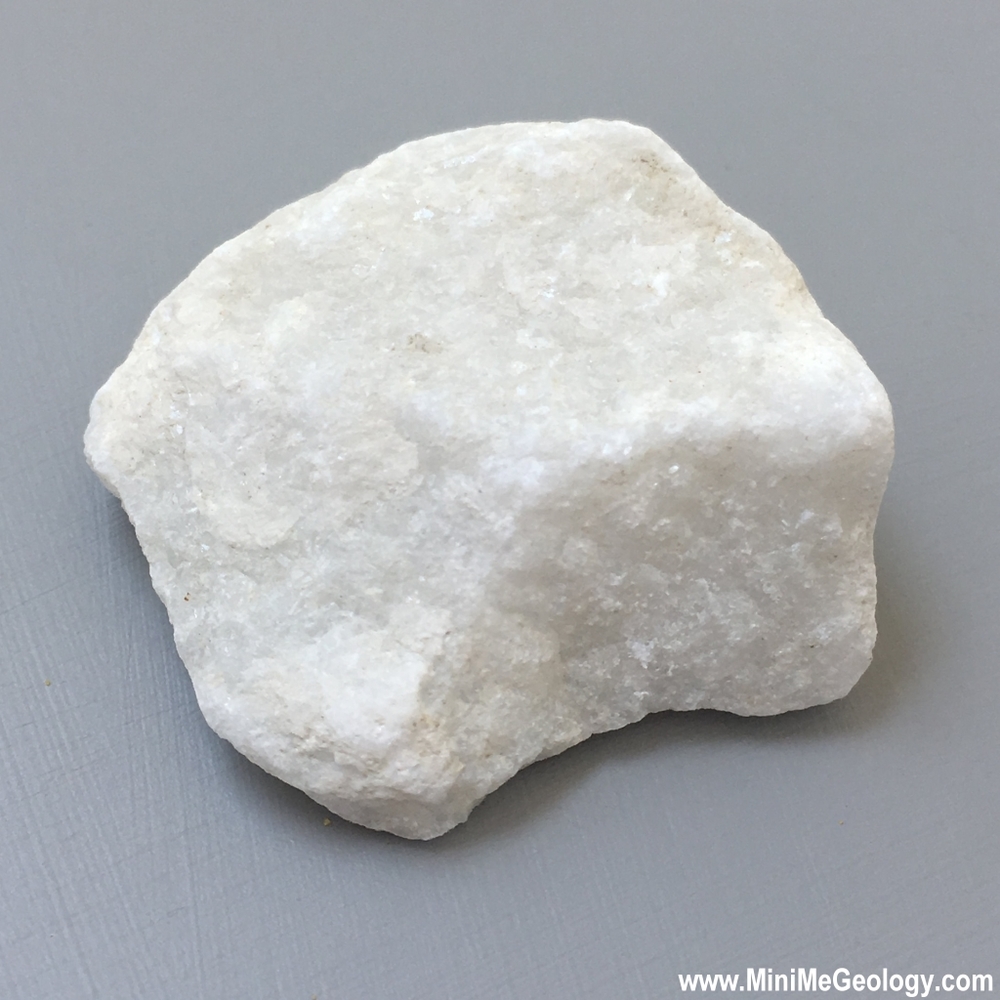
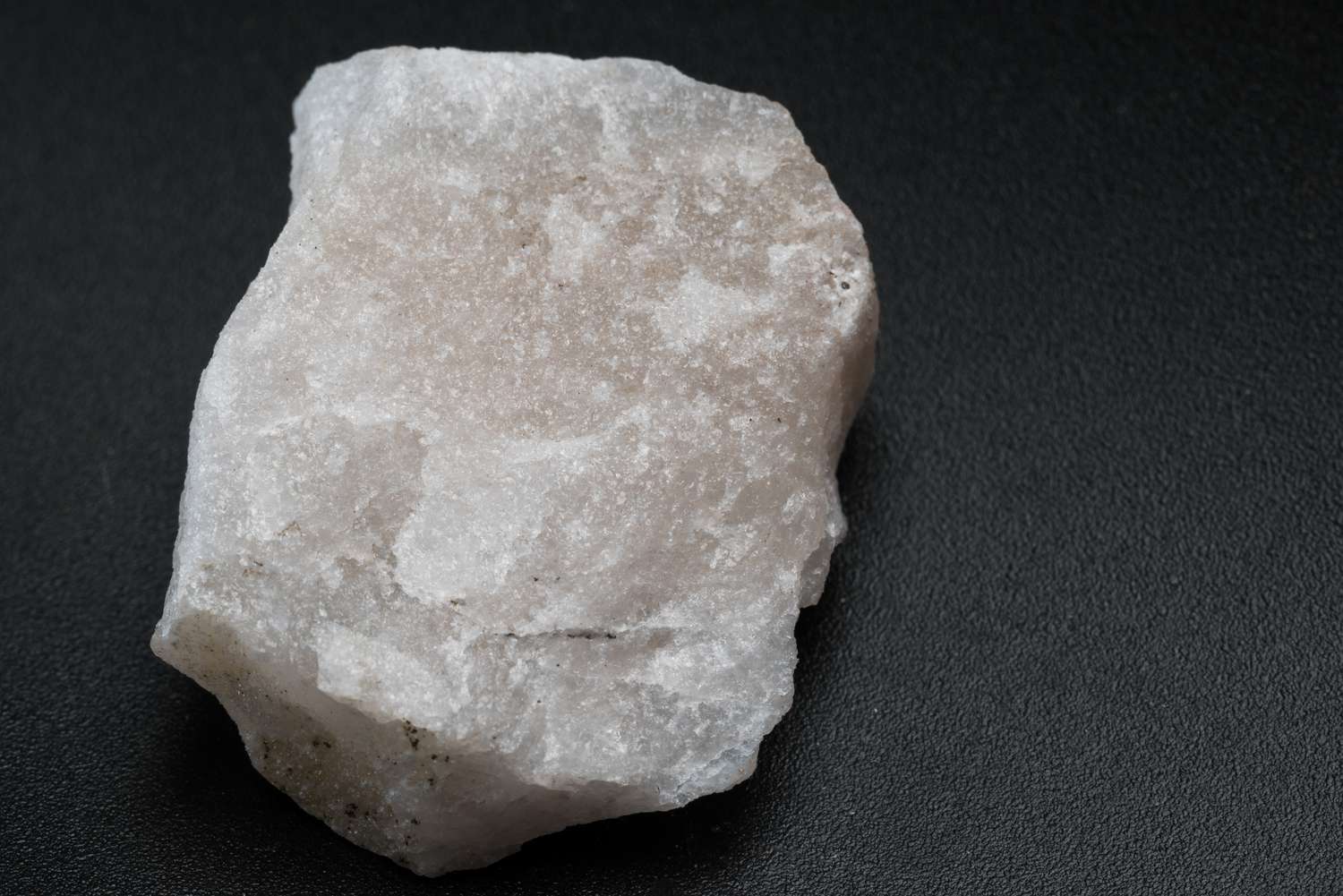
Identify
Metamorphic rock: Quartzite
Quartzite is a nonfoliated metamorphic rock composed almost entirely of quartz. It forms when a quartz-rich sandstone is altered by the heat, pressure, and chemical activity of metamorphism. it's usually a white to pale gray rock, but occurs in other colors, including red and pink (from iron oxide), yellow, blue, green, and orange. The rock has a grainy surface with a sandpaper texture, but polishes to a glassy shine
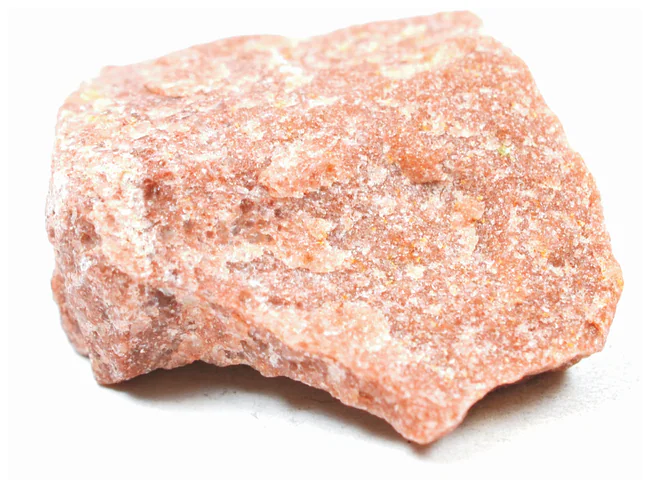
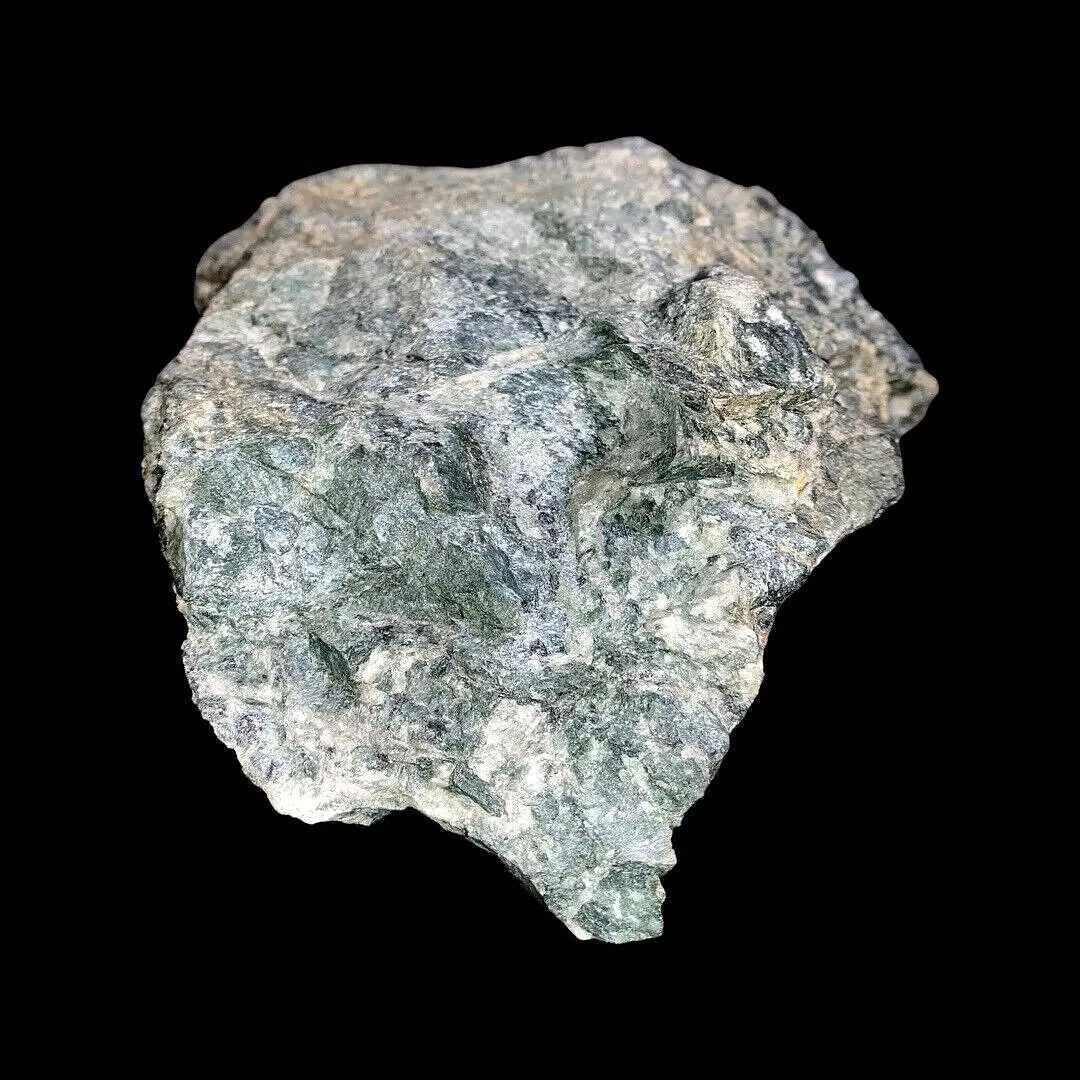
Identify
Metamorphic rock: serpentinite
Serpentinite
Serpentinite (Fig. 7.12) is a metamorphic rock mostly composed of one or more of the serpentine group minerals that include antigorite, lizardite, and chrysotile. The serpentinite depicts fascinating shades of green color and usually layered and banded. The serpentinite is formed by the hydrous alteration and low-temperature metamorphic alteration of igneous ultramafic rocks. These rocks are composed of olivine and pyroxene in different ratios to form peridotite and pyroxenite.
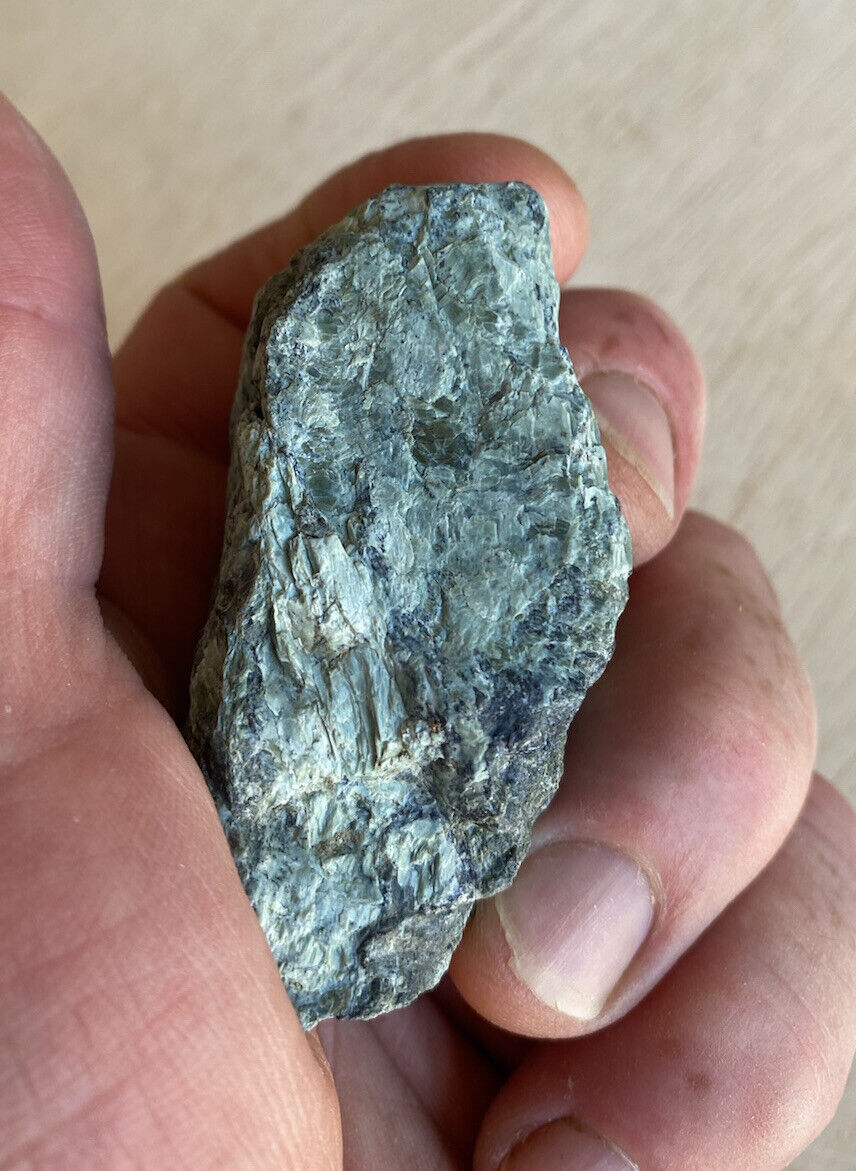
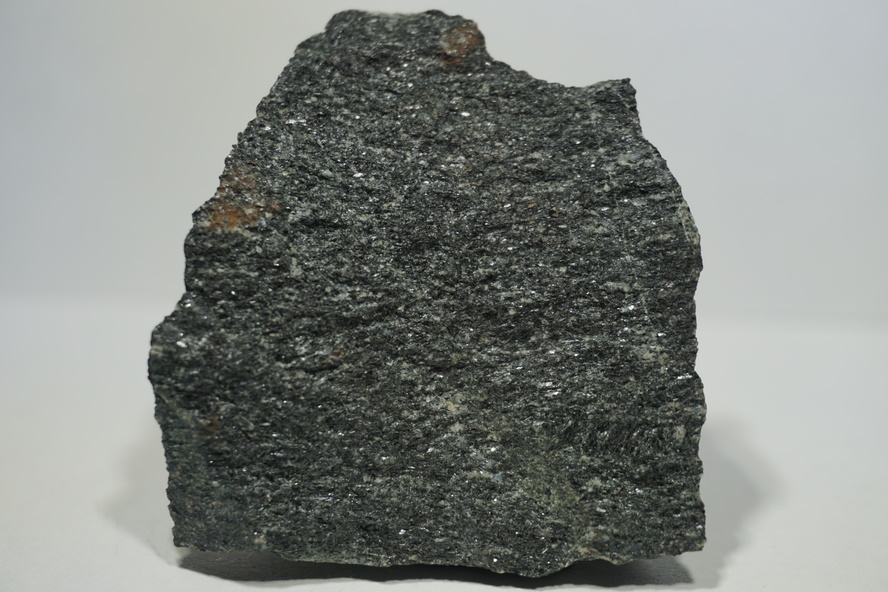
Identify
Metamorphic rock: amphibolite
Amphibolite is a coarse-grained metamorphic rock that is composed mainly of green, brown, or black amphibole minerals and plagioclase feldspar. The amphiboles are usually members of the hornblende group. It can also contain minor amounts of other metamorphic minerals such as biotite, epidote, garnet, wollastonite, andalusite, staurolite, kyanite, and sillimanite. Quartz, magnetite, and calcite can also be present in small amounts.
